TEDDY SWIMS
The vocal powerhouse embarks on his biggest tour yet with a tight-knit crew


TEDDY SWIMS
The vocal powerhouse embarks on his biggest tour yet with a tight-knit crew

Production crew deliver a record-breaking spectacle at Stade de France
ACT 1.5 Analysing the impact of Massive Attack’s sustainability project
THE WOMBATS
Retracing the creative process behind the band’s latest arena tour

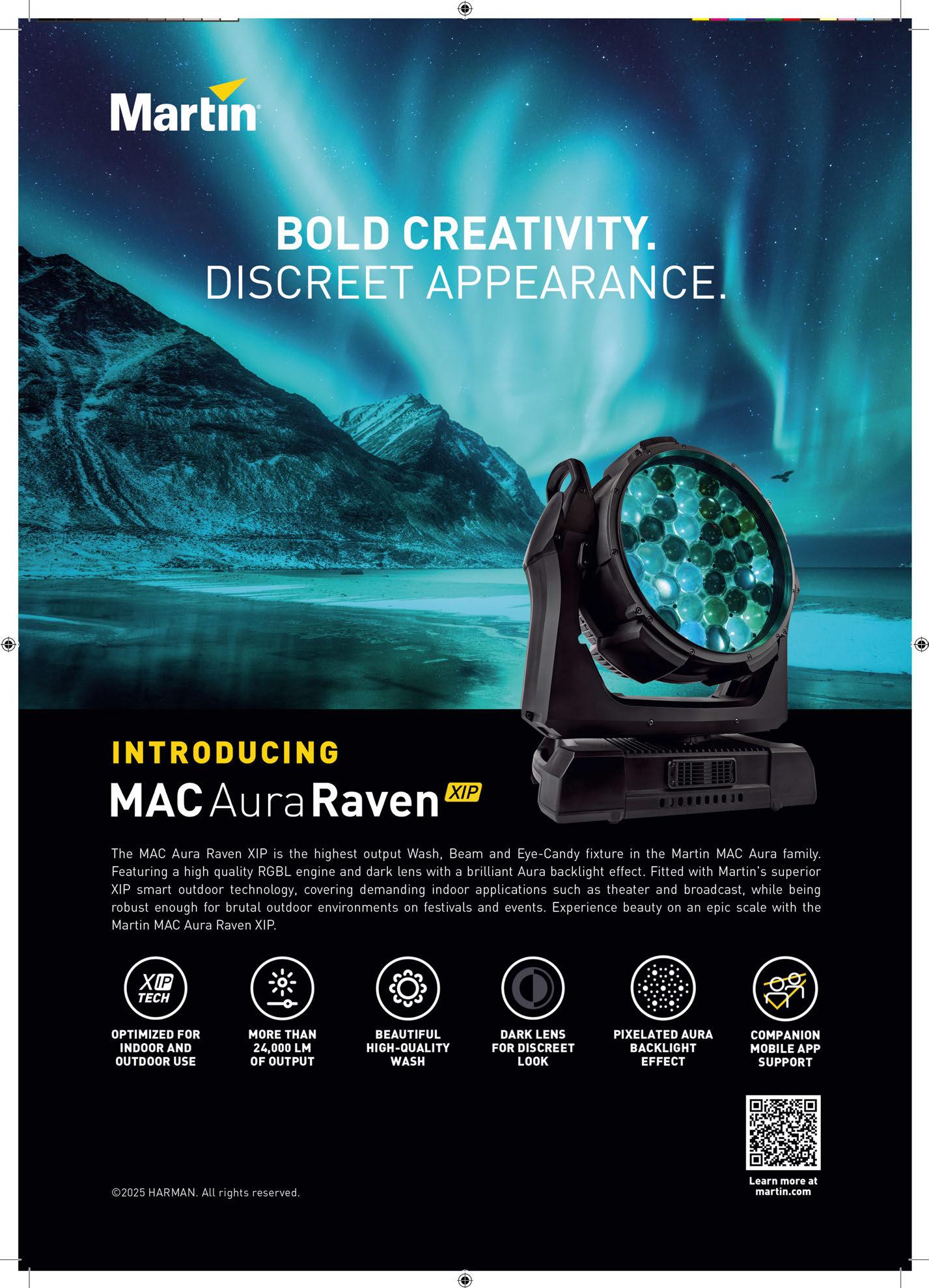





















People often talk about the cyclical nature of the live touring industry –there is the quiet winter, the spring touring season, summer festivals, autumn touring and then the dance begins all over again. We know all too well how this yearly cycle ground to a halt in 2020 before clicking into high gear post lockdown, but today as Jacob, Alicia and I scrawl on our shared calendar to work out how we’ll get from one show to the next, it would be easy to get lost in the whirlwind and miss the incredible progress being made in the industry.
Take this issue; our cover story documents Burna Boy’s latest crowning achievement – being the first African artist to headline the Stade de France, while his audio tech team broke new ground on wireless capabilities for all the performers on stage. Then we have Teddy Swims –the latest success story of an artist who built a following on YouTube and is now taking an arena-level production out on the road.

We also have our deep dive into the ACT 1.5 project following the release of the official paper outlining the carbon reduction made by last year’s event in Bristol. In the article, we hear from some of the key players who hypothesise how their work could lead to some real positive change in the sector. In fact, we’ve already seen announcements from LIDO Festival, which is set to radically alter how it powers the event this summer following the work of ACT 1.5. Elsewhere in the magazine, we chat to TESS (The Event Safety Shop) who ruminate on 25 years of business and the changing attitudes in safety at live shows. We catch up with FunktionOne’s Research and Development Engineer,
James Hipperson, to discover more about the company’s latest software – Projection 1.0 –which utilises a whole new method of audio prediction, specifically focussed on lower frequencies for more accurate predictions of what will be coming out of a PA system.
It ’s always a joy to hear these various tales of innovation from all levels of the industry and those challenging the status quo. And with a busy schedule ahead – I’m sure we’ll be reporting on many more productions for the rest of the year and beyond.
Until next time,
Stew Hume Editor
Issue #287 May / June 2025
Editor Stew Hume Tel: +44 (0)161 476 8360
Mobile: +44 (0)7702 054344 e-mail: s.hume@mondiale.co.uk
Deputy Editor Jacob Waite Tel: +44 (0)161 476 8360
Mobile: +44 (0)7592 679612 e-mail: j.waite@mondiale.co.uk
Staff Writer
Alicia Pollitt Tel: +44 (0)161 476 8360 Mobile: +44 (0)7508 441986 e-mail: a.pollitt@mondiale.co.uk
Commercial Director Fran Begaj Tel: +44 (0)161 476 8360 Mobile: +44 (0)7852 336728 e-mail: f.begaj@mondiale.co.uk
Account Manager Matilda Matthews Tel: +44 (0)161 476 8360 Mobile: +44 (0)7413 555978 e-mail: m.matthews@mondiale.co.uk
Account Manager Tom Dyson Tel: +44 (0)161 476 8360 Mobile: +44 (0) 7306505230 e-mail: t.dyson@mondiale.co.uk
Digital Content Manager James Robertson Tel: +44 (0)161 476 8360 Mobile: +44 (0)7725 475819 e-mail: j.robertson@mondiale.co.uk
Marketing and Events Manager Alice Clarke Tel: +44 (0)161 476 8360 Mobile: +44 (0)7752 392465 e-mail: a.clarke@mondiale.co.uk
Marketing and Events Assistant Charlie Moore Tel: +44 (0)161 476 8360 c.moore@mondiale.co.uk
Editorial Director Peter Iantorno Tel: +44 (0)161 476 8360 Mobile: +44 (0)7763 233637 e-mail: p.iantorno@mondiale.co.uk
Chief Executive Justin Gawne Tel: +44 (0)161 476 8360 Mobile: +44 (0)7768 850767 e-mail: j.gawne@mondiale.co.uk
Accounts Lynette Levi / Sarah Miller: ar@mondiale.co.uk
Mondiale Group Chairman Damian Walsh
Graphic Design & Production
Dan Seaton: d.seaton@mondiale.co.uk
Jez Reid: j.reid@mondiale.co.uk
Cover Photo
Burna Boy
Photo: Maja Moan
Printed By Buxton Press • www.buxpress.co.uk
Annual subscriptions (including P&P): £42 (UK), £60 (Europe), £78/$125 (RoW).
Subscription enquiries to:
Subscriptions, Mondiale Media Limited, Strawberry Studios, Watson Square, Stockport, SK1 3AZ, UK. Tel: +44 (0)161 476 5580 e-mail: subscriptions@mondiale.co.uk www.tpimagazine.com www.tpiawards.com
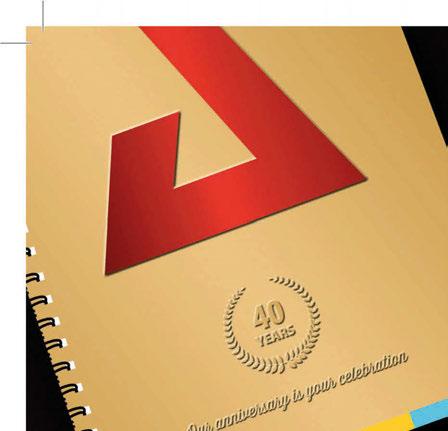




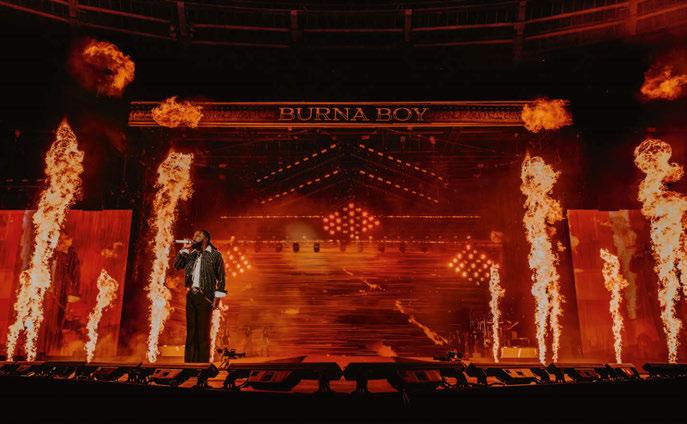
Afrobeats takes centre stage as Burna Boy makes history as the first African artist to sell out the Stade De France.
12 The STUDIO/ team dive into their design for Clean Bandit’s London Palladium show.
14 Cohesion PA supports Five Finger Death Punch tour.
16 Rosie Haigh lights the way for The Wombats’ latest arena tour.
20 Adam Rowley selects Waves’ eMotion LV1 Classic console for Good Neighbours.
38 TEDDY SWIMS
The vocal powerhouse embarks on his biggest tour yet, with a crew made up of his own friends.
56 ACT 1.5
Analysing the impact and implications of Massive At tack’s sustainability project.
70 Funktion-One unveils its new audio prediction software.
74 Andy Copping previews Download Festival 2025.
76 Adam Hall Group reflects on 50 years of excellence.
80 The Event Safety Shop look back at 25 years in live events.
84 Colour Sound Experiment shares its 35-year journey.
88 IPS moves to a new six and a half acre site in Milton Keynes.
92 Crew and venues unite to form the Technical Academy and Production Futures launches a brand new app.

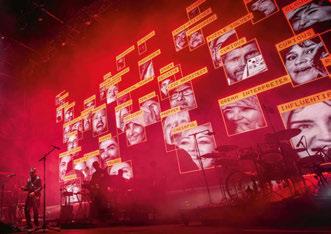



96 Vari-Lite’s new VLHive 151 Digital FX luminare.
100 Sound Devices previews A 20-HH.
102 Obsidian Control Systems introduces the NXW.
FEEDBACK
103 PSA on collaboration and the vital role of freelancers.
104 Supporting the five generations working in live events.
106 Shure bids to protect the radio spectrum with WMSA.
108 EAW’s Robert Scovill talks ADAPTive technology.
110 Unusual Rigging launches sustainability Project.
114 Meet L-Acoustics’ new CEO of Americas, Bryan Bradley.
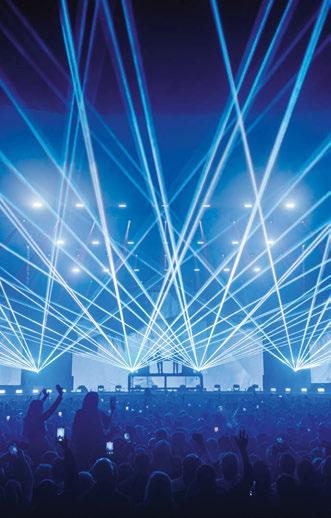


The team from STUDIO/ reflect on the assembly of a bespoke production design for Clean Bandit’s one-off show at The London Palladium, featuring multiple guest singers, and share their collective desires of challenging the status quo when it comes to video content.

Words: Stew Hume
Rosie Wills

Having worked with the classically-inspired pop trio for several years, STUDIO/ led the creative charge for Clean Bandit’s recent show at The London Palladium. The intimate performance was part of #BRITsWeek for War Child! which saw notable artists perform in famed venues across the city in the lead-up to this year’s BRIT Awards. TPi sat down with Show Designer, Jack Fox of STUDIO/, to learn more about the creative process.
For the uninitiated, STUDIO/ is a creative agency which specialises in show design and creative direction. Recently founded by the team at Really Creative Media (RCM) –themselves veterans of the entertainment industry – STUDIO/ aims to shake things up a bit in the show design world.
“We’ve always been a design-first creative team,” stated Fox. “In recent years we’ve seen a move towards designs built on rental technology rather than design intent. We’d like to shift the needle back!” STUDIO/’s aim is to
go bigger and bolder than ever with their show design. “We share a studio space with RCM, and as you’d imagine this gives us access to a lot of equipment and clever technology, which gives us a lot of design freedom as well as the production support to think big with our work,” he said.
The two companies complement each other well, as demonstrated with this project. Alex Vipond was the video designer for the show. He explained how t heir creative-first approach and st rong relationship with RCM meant they found the right solution for The London Palladium show design, which included multiple video surfaces. Utilising LED and projection, the production was able to create multiple forced perspective elements.
“Having a close partnership with RCM is still incredibly useful for us at STUDIO/ as we can use their space to test various looks before hitting rehearsals, saving both time and money,” he explained. “This allows us to
push our creative ideas to the limit, to see what elements of the design work on which surfaces, to ground all these wild ideas in reality”.
In t he build-up to the show, Fox and Vipond were able to draw on their eight-year relationship with Clean Bandit to create a unique look that was all centred around a ‘train theme’. Vipond elaborated: “One of the main goals for this show was to bring the three musicians that make up Clean Bandit – Grace Chatto, Jack Patterson and Luke Patterson – to the forefront of the stage. This was seen from the beginning of the show, which was completely stripped back. Just the original three, with simple direct lighting, playing for the first fi ve minutes before revealing any other show elements.”
The eventual design incorporated a curved gauze structure that wrapped around the upstage, that with projection created a train live on stage – a t heme t hat filtered t hrough all aspects of the show design. “This was



designed so each of the 10 guest singers ‘walked down the train’ behind the gauze to enter the stage,” stated Fox.
The ‘train’ also gave space for performers to remain on stage throughout the show. “Being in such an iconic venue, we wanted to lean into our theatrical influences. Having the performers remain onstage after their songs gave us that ‘a night with…’ vibe rather than a traditional concert format” Vipond added. “It made the whole thing feel really intimate for the audience”.
Aiding the creation of the rest of the set – which included a five-metre high gantry for the ‘DJ’ portion of the show – Fox brought in Illusion Design & Construct. “The company has a background in theatre, and I knew their scale and experience meant they would be able to build everything we needed to a high standard in the time we had. Building the train structure was quite challenging but I knew if there was anyone who could build such an impressive structure, it was them,” he said.
Vipond further outlined the varied video solutions behind the screens. “For this show, 99.9% of the content was new bar a few small easter eggs from other Clean Bandit projects. With 21 songs it was quite a huge task as we had five unique surfaces, we were creating content for – all of which was done in three weeks.” As well as the use of projection to create
the ‘train’-inspired looks, Absen PL2.5 LED panels flanked the stage to extend the theme, reproducing a departures board with ticker tape graphics on pixel bricks as well as live filmed footage from the stage. The visual narrative is a chaotic, glitch-driven spectacle that mirrors the unpredictability of travel and technology, taking us though vast landscapes and other-worldly parties until the culminating ‘virus’ takes over. “Imagine a digital glitch across the whole rail network. We wanted everyone to feel as if they were travelling on this crazy train ride with the band and their guests. The departure board, and signalling gantry brought different levels and a vastness to the world that allowed us to drive that story visually”, Vipond noted.
To close, Fox hopes this show and the formation of STUDIO/ will help push the concept of video content creation being included earlier on in the production process.
“V ideo content is often the last production conversation and what we’re attempting to do is build closer relationships with artists so we can be brought in early on and suggest a design that isn’t just a few rectangles on stage,” Fox explained. “It’s early days but I’m confident about the future.”
www.cleanbandit.co.uk
www.sdio.io www.rcm.tv
The American heavy metal band select Cohesion PA for their latest European and North American tour.

Five Finger Death Punch and their team prioritise connecting with the audience during their high-energy shows, so vocal intelligibility and musicality from the PA are as important as seamless coverage and output. For the band’s latest Europe and North America tour, the production opted for a full Cohesion sound system to bring metal music to the masses.
“It had to be repeatable, and I wanted consistency,” began FOH Engineer, Bruce Reiter. “Everything must be perfect for the fans and for the artist, and we wanted to replicate that every night. One cool thing about Cohesion was how even I could get it. It had a lot of power, it was crystal clear, and I got the dB level 250ft back in an arena. At our 2022 show in Switzerland, we had the same level at the barricade as the back of the audience. That was something I hadn’t experienced much with others.”
System Engineer Bob Alumbaugh added: “Rarely do you have a PA that can shoot that far. I had 105dB from 380ft to 420ft.”
Clair Global deployed the audio system that featured 12 to 16 Cohesion CO12 on the main hangs with another 10 to 12 CO12 for each side hang, depending on the venue. Six Cohesion CP218 II+ subwoofers were deployed per side, three each flown and ground stacked, all in cardioid configuration.
“Cohesion put out an incredible amount of bottom end - even if you took away the subs,” said Reiter. “We were still only using a small amount of their potential even with six of them. Cohesion gave a great, powerful mix before the subs. Then we used them more effectively and more emotionally.”
Eight Cohesion CO8 were spread across the front of the stage as fill, and fourteen additional Cohesion CM14 monitors were distributed around the stage. “The guitars were so important and can’t be compromise,” said Alumbaugh. “We focussed on that every day. The guitars would smack you in the face, but they didn’t compete with the vocals.”
Reiter added: “Guitars sounded particularly good with the Cohesion system. I think the midrange was the most important. If you took a filter and removed all the low end and high end, you should be able to hear every single element of the mix. Having a lot of power in the midrange is important so you don’t get distortion, and Cohesion just didn’t distort.”
Alumbaugh noted: “You could feel the power straight out the gate with Cohesion, it delivered on all three counts of headroom, output, ability to do what you want.”
Clair Global’s Liv Nazare, PA Technician on the tour, got the chance to step up and mix supporting act Slaughter to Prevail for one night, her first time behind the console. “I wasn’t fighting with the system. It just sounded good right off the bat. The 218s are impressive.”
The audio system fit the production team’s needs, particularly in efficient rigging and truck pack. Production Manager, Chris Zakoor elaborated: “The production is assembled swiftly PA left and right is the first to go in, and we were always on time for doors. It was seamless, and it was always in one truck, even underweight a bit.”
Nazare added: “It’s simple, it’s fast, and it’s very intuitive. I’m on the smaller side physically, but I could still handle it myself.”
Ultimately, the crowds who sell out an arena are the best barometer for a show’s emotional impact, and this tour had no shortage of incredible fan stories, from lifelong fans cheering alongside throngs of youngsters attending their first shows to the ritual of the band members giving lucky spectators signed baseball bats and guitar picks.
“I was firing confetti, so I got to see the fans firsthand. It was such a good time,” said Zakoor, who has been the band’s PM since 2020. “There’s a new generation of fans coming, and everyone walked away smiling.”
Alumbaugh added: “Our collective mission is to bring the band and all its energy to the fans. One of those amazing concertgoers may be witnessing their last show, unfortunately. The experience must be as memorable as possible, and that gives us as a team a goal every day.
That’s how we operate.”
Reiter – who was the Tour Manager for Five Finger Death Punch from 2010 through 2020 – illustrated the significance of the Afterlife Tour by sharing the story of 12-yearold cancer survivor who was invited on stage at the September 2024 show in Atlanta to sing alongside the band.
“Fans expected and needed to understand the band. They talk to people about their lives. That’s why the vocals had to be crystal clear,” said Reiter. “This Cohesion system has the clarity. Intelligible vocals are so important in helping people deal with their emotions. If he can release that pressure and pain from life, we had to make that moment special.”
www.fivefingerdeathpunch.com www.cohesionaudio.com

Veloce Profile is a versatile luminaire that shines in all conditions—indoors, outdoors, even in salty environments. Defying conventions, Veloce Profile boasts a cutting-edge sealed monoblock 850 W high-efficiency LED module, calibrated at 6500 K. This trailblazing module delivers a luminous flux of 43,000 lm, perfectly aligned on the black body curve for unrivalled light neutrality. Weighing in at just 40.5 kg, Veloce Profile is the lightest luminaire in its class.

Flux
lm
Series 850 W Beam Aperture
Front Lens
mm
From fur climbing the walls of the stage to the first use of the new Vari-Lite VL Hive 151 Digital FX fixture, TPi goes behind the scenes to get an insight into the creative for the band’s arena tour…

Words: Alicia Pollitt
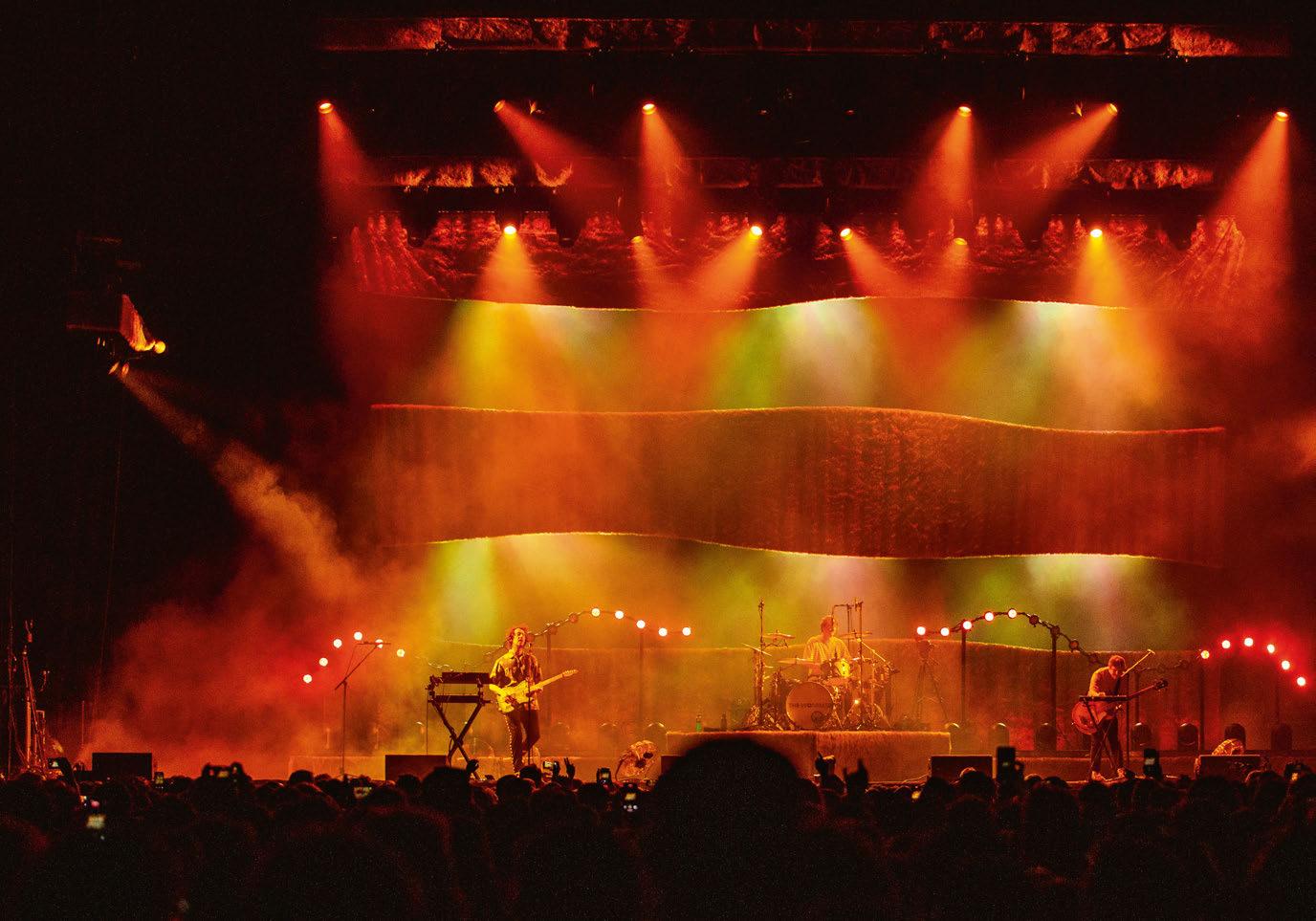
Indie-rockers The Wombats recently embarked on an arena tour to celebrate their first album in three years, with a lighting design from Rosie Haigh, who started working with the band in 2023 at the end of the previous album campaign. “For the band, it’s all about how it feels on stage, as much as it is about how it looks,” Haigh began. “They play a high-energy set, so they like to feel the energy close to them on stage, hence a good-sized floor package, but also, they aren’t afraid of the dark, which really helps me build dynamics for the show.”
Haigh wanted to keep the overall creative for the show surrounded by the album theme, which is a gold furry eye of a stuffed toy, and within the button eye is a desaturated picture of the ocean. “On discussion, there was a request to not lean into the ocean imagery too strongly, and with the album title being Oh! The Ocean, it could’ve easily pulled that way,” Haigh
explained. This resulted in taking inspiration from the waves of the original artwork, but fashioning the texture out of fur instead, to keep in line with the album’s creative.
“Everything starts in pencil. While in the original discussion process with Tour Manager Simon, I filled in the hotel paper pad with some initial concepts,” Haigh said. “The first ideas were a collaboration, and I think we would have every inch of the stage covered in fur if we hadn’t reined ourselves in. The result is not far from the original sketch in truth.”
A happy accident of the band having to perform on a different stage than originally planned at last year’s Leeds Festival meant that Haigh was exposed to tech that inspired what was later taken on the road. “The Chevron Stage had Colour Sound Experiment’s low-res video net suspended above the audience so I rustled up some last-minute content and we used it as part of the show. The band loved
the way it covered the audience and that they could watch it during the show,” Haigh added.
“This made me want to have some form of lowres video content interlaced with the fur on the back of the stage, and that’s where the Hives came into play.”
When it came to presenting the idea to the band, Haigh painted her ideas in watercolour and bought a fur sample. “It was just me, some pictures of lit up fur, my paintings and thrown together images on a Skype call. Thankfully, the band and management team unanimously decided to roll with what this crazy woman with her paints and fur had on offer and we moved ahead with the design,” Haigh enthused.
An arsenal of fixtures were deployed on the design, including the first use of the new Vari-Lite VLHive 151 Digital FX. “This was the perfect coincidence, and a marrying of my two job roles – self-employed Lighting Designer and a Product Specialist and BDM at Vari-Lite,”




Haigh said. “After showing the band the fixture, which was a big deal as it was top-secret at the time, they were excited to be involved with such a new technology and agreed to take the risk of using a prototype on the arena tour.
“We had some of the first prototypes ever built; they came to us from the Dallas factory and you can even see the spray paint used on the housing of the fixture from the engineering team – but you never would have guessed they were prototypes because they are so bright, and the colours are so vivid, even when doing pastels,” Haigh said. “It’s an honour to be able to take them on this test run before the product officially launches. The engineering team and Vari-Lite Product Manager, Martin Palmer have been working on this technology for a long time [see p96], so to be trusted with the pre-release was very special.”
Supporting the VLHives, Adlib deployed ACME Lighting PIXEL LINE IP solutions, which formed straight lines on each of the flown
trusses, Ayrton Kyalami lined the back of the stage symmetrically, while above them was a wave of Martin Professional VDO Atomic Dot CLD fixtures. Ayrton Cobras were added to the flown rig to work in conjunction with the Kyalami to create laser like effects.
“T his was my first time working with Adlib’s lighting rental; however The Wombats have a longer history with them. Being a Liverpool band, they have big love for their community, so working with a company from the area was important to them,” Haigh said. “This was a 360° gig for Adlib and all departments supported each other. I can’t fault Adlib for the team spirit and work ethic that resonates throughout their crew – they are all ambassadors for the company, and you can see that they are proud to work there.”
Adlib’s Adam Taylor, commented: “It’s been brilliant to support The Wombats again on this tour, continuing our long-standing relationship with this band. We always really enjoy and
appreciate working with Simon, and we were proud to help bring Rosie’s lighting design to life which looked fantastic.”
Reflecting on the tour, Haigh told TPi her favourite looks from the run, noting that it was ‘fun’ to create a design that wasn’t her own personal style. “It meant I could play with bold saturated colours, surrealist textures, colour clashing and really throw myself into a bolder, more colourful palette,” Haigh said. “It’s lively and fun, and very much an indie party singalong at times, but there are some moments in the set where it gets darker and emotional. Many of the fans connect to the music in different ways, for different reasons, so we wanted to create a show where everyone was having fun and could leave on a high – creating pure escapism,” Haigh concluded. “I enjoyed building this show and what we put together.” www.thewombats.co.uk www.vari-lite.com www.adlib.co.uk

FOH Engineer, Adam Rowley, outlines the benefits of Waves’ brand-new eMotion LV1 Classic mixing console while on the road with Good Neighbours.

Words: Jacob Waite
Photos: Waves and Adam Rowley

In support of Foster The People’s latest US tour, FOH Engineer Adam Rowley recently hit the road with East London-based alt/indiepop band, Good Neighbours. “I’ve known Oli, the lead singer, for a long time. We used to write together before the pandemic, so it was lovely to be part of this tour – a real full-circle moment,” he told TPi, as the dust settled on a successful 42-day, 30-show run.
“We used Clair G lobal to fill in t he g aps alongside my FOH setup. T he main advantage of working w ith such a large company, especially w hen we needed such a small package, is t heir ability to rectify issues
overnight. We don’t have t he c apacity to c arry a t runk of spares on a bus and t railer tour.” Being able to c all our account manager and have w hatever we need shipped overnight to anywhere in t he world is invaluable. Huge thanks to Ed Shackleton in London and Reece Webber in Nashville for supporting me, as al ways,” he recalled. “ It was a packed schedule – I t hink we played pretty much every Fillmore and House of B lues across t he continent…” As an early adopter of Waves’ Classic setup, Rowley received t he first shipment of IONIC 24 and 16 SoundGrid stageboxes – featuring Waves Signature preamps. I built t he r ig to
be modular so I could place t he stageboxes in different places on stage. However, I first got to k now t he LV1 Modular system w hile touring w ith Against T he Current last year and absolutely loved how r idiculously compact it was for t he power on offer. W hen t he Classic was announced and I started chatting w ith
Waves, it quickly became clear just how strong a value proposition it is,” Rowley enthused. He pointed to t he console’s 24-inch touchscreen, 16+1 faders, 12 outputs, network capabilities, and six USB ports – all built into a surface t hat fits in an SKB c ase and c an be flown, costing less t han t he control surface alone f rom other major fl yable options – as key ad vantages w hile on tour.
“ The fact I c an r un six stereo IEM mixes and a banging FOH mix – all w ith latency compensation t hroughout t he console, tonnes of A bbey Road plug-ins, and still keep audio under 5ms – is staggering,” he enthused.
For Good Neighbours, t he brief was clear: the gear needed to be fl yable, liftable by one person, handle 55 inputs at 96kHz, r un six
IEMs, and t ranslate a specific production style with heavy vocal effects all operated f rom
FOH. “ We ran tuning and formant shifting live on t he console for all fi ve vocalists on stage, then could tear it down, chuck it in an Uber, and knock out a small acoustic set at a radio station using t he exact s ame vocal processing as on the records,” he explained.
With plenty of press and varied venue sizes on t he agenda, Rowley appreciated t he r ig’s modularity. “ I’ve got 16/16/24 racks t hat c an be split up and distributed around t he stage, so we don’t need to haul massive copper c able


runs – we just drop in some Cat5 instead,” he explained. Giving TPi a tour of his rig, Rowley explained how he uses a Waves Titan SoundGrid Server on stage for processing redundancy. Should the internal computer fail, he can fall back on the LV1 software running on his MacBook, which instantly picks up from where the surface left off. His setup also includes a small router Velcroed to the rear of the console, allowing all six musicians on stage to control their own monitor mixes – leaving Rowley free to focus on the FOH mix.
“Inside my session, I’ve got everyone’s mixes on hotkeys that PAFL and flip to sendson-fader – massively helpful when you’re juggling that many mixes on a compact surface. The Classic also gives you two viewable Mixers which are completely independent but share the same inputs. I’ve got MIXER 2 set, so each fader bank corresponds to a different band member’s mix with their key inputs. Flipping over doesn’t reassign my FOH faders, so I’ve always got one hand on the house mix, while still managing monitors on screen,” he explained, highlighting the flexibility of the
Waves ecosystem. “I come from a songwriting and production background, so having access to the Waves plug-ins I know, and love is just wicked. I can fully recreate the exact sounds the band used in the studio – and that gets people hyped,” Rowley said, sharing his favourite moments in the set.
R ipple came out while we were on the road – it’s got some mad shifts in dynamics and vibe. There’s a slightly garage-y drum groove in the verse with this almost spoken-word cadence, then it explodes into this massive, reverbdrenched, five-part vocal chorus. I love that contrast between tight, dry drums and the big wash in the chorus. Kept my hands busy – and me dancing – at FOH.”
Summing up his experience, Rowley said: “Good Neighbours are genuinely good people. Touring with them is a joy. Their fans are brilliant and the songs bang. They’ve got this gift for writing lyrics that just get it – I think that’s a huge part of why they are taking off.”
www.wearegoodneighbours.com
www.waves.com
www.clairglobal.com
ROYAL MYCONIAN COLLECTION • MYKONOS • 6 - 9 MAY 25

Over 130 artists represented this year including…
RADIOHEAD • KISS • LANA DEL REY
ROBBIE WILLIAMS • DURAN DURAN
LOUIS TOMLINSON • THIRTY SECONDS TO MARS
JOJI • GRACE JONES • MADNESS • GLASS ANIMALS
PINKPANTHERESS • JAMES BLAKE • CHVRCHES
CLEAN BANDIT • BECKY HILL • SIGALA • JAMIE T GIRLS ALOUD • PAOLO NUTINI • ELLA HENDERSON
JONAS BLUE • SONNY FODERA • PJ HARVEY • GOLDIE
GIRL IN RED • KING PRINCESS • METRONOMY • PALACE
AGAINST THE CURRENT • NIGHT LOVELL • THE SMILE THOM YORKE • LIZ PHAIR • DIGITALISM
SAINT MOTEL • JACK GARRATT • MEW • WILD RIVERS


Afrobeats takes centre stage as Burna Boy and The Outsiders make history, backed by guest artists, traditional African instruments, backing vocalists, and dancers – orchestrated by a unique team of creatives and production talent…



Originally constructed for the 1998 FIFA World Cup, France’s national stadium has played host to countless iconic sporting moments in recent history. The latest chapter in the Stade de France’s rich legacy was a cultural triumph, as the stadium set the stage for Burna Boy’s latest performance – a landmark event that saw the Nigerian singer, songwriter and record producer become the first African artist to sell out the 80,000-seat venue, supported by a collective of creatives and production specialists driving the carnivalinspired, high-energy spectacle.
On site, Production Lead, Temidayo Oladehin was supported by Lolade Akinsiku, Temilade Kadri, Kemi Odeyemi, and Senior Product and Tour Manager, Shannon Wright. “We must have had 200 meetings in the lead up to this show,” Oladehin said, citing the global footprint of team with creatives.
Creative Director, Ronami Ogulu was instrumental in the development of the production design, which included five scene changes – from bedroom to jungle – automated lighting pods, a long thrust with a B-stage, mirrored IMAGs, a lift and a litany of special effects and pyrotechnics, among more.
“We wanted a simple-looking stage but with a lot of dynamic elements. In collaboration with Ronami, I developed the video screen design, and the scenic – a white-walled room, which doubled as a versatile canvas, allowing the creative team to paint what they want on top
of it, with various scene changes throughout the show,” Oladehin explained. To make the vision a reality, On a Spaceship enlisted the support of Patchwork London (audio control), Southby Productions (PA), Siyan (lighting and automation), Upset (staging), Creative Technology (video), Hephzibah Productions (backline), CrowdLED (wristbands), Fly By Nite (trucking), Tamtam (catering), Grand Final Fireworks (special effects and pyrotechnics), Team Audio (communications), Nylon (merchandising), H2H Rigging, among other local vendors. “We’ve worked with most of the suppliers before and they all provide excellent service and support,” Oladehin remarked.
In addition to wrangling the production elements, Oladehin has mixed Burna Boy’s FOH signature sound since 2016. With a tenor saxophone, lead saxophone, trombone, trumpet, talking drums, two keyboardists, a bass guitar, an electric guitar, drums, percussion, multiple dancers, in addition to Burna Boy, backing vocalists and seven guest artists, the show had a lot of moving parts.
“You see two different sides of me when I’m production lead and mixing; I see the former as a job – I am under immense pressure to ensure things come to pass and are done perfectly, but when I get behind a desk, I just have fun. I see myself as a musical director, conducting a choir of 40,000 people, including the audience. They are the people I am satisfying, while the monitor engineers handle those on stage, and
if I don’t do my job right, they are not going to enjoy the show. As soon as I start mixing, nothing else exists.”
From CAD to creation, Oladehin and audio control package specialist, Patchwork, embarked on a three-month-long process of discovery before fleshing out what would become the final rig, trading analogue for Dante to make a tourable control package suitable for setup anywhere on the globe, with the result visually befitting the ‘spaceship’ idem adopted by the core production camp. “Burna Boy has a trademark sound, which must be consistent, and because we have a large band, travelling dry and looking for local suppliers provides an additional layer of stress. This control package has been to Kenya, France and shortly we will tour in the US,” Oladehin added. “Burna Boy is an A-list artist, so we must deliver first-class production everywhere we go.”
Calum Mordue, Touring Director at Patchwork and Monitor Technician, commented: “Our relationship with the camp started two years ago at an album release show at PRYZM Kingston, and we have helped service their audio control packages ever since. Compared to today’s standards, back then it was a much smaller system. Now, there are way more inputs, mixes, and equipment.”
According to Keiran Edmonds, FOH Technician and Technical Manager for


Fly By Nite has been on the road for over 37 years, using all the knowledge we have gained over the years to give our clients peace of mind when planning their tour or event. Our Trucks are tracked giving up to the minute location information. From documentation, routing, permits, ATA Carnets, double drivers, 24/7 access to our services from four locations Redditch UK –Dublin IE – Amsterdam NL – Cluj RO, Allows you to focus on your event.








Patchwork, the ingenuity of the system involves the stuff you can’t see, like the software programming and networking. “The aim is to make this tourable and deployable as quickly as possible, while maintaining the specifications of outboard, KLANG, Waves, and Dante. From a network point of view, there are 15 VLANs on the go when the system is up and running,” Edmonds explained. “We’re super happy with the outcome. Of course, there are areas we want to improve or enhance over time. Temidayo is an extremely accomplished engineer who is clear about what he wants and knows how to get the best of the rig, so it’s a pleasure to work with him.”
Oladehin was equally complementary about his right hand man in the mixing booth. He said: “Kieran is the greatest FOH Technician I’ve ever worked with; he allows me to focus on my production lead role during the day, while he sets up FOH. We have developed a synergy over the past few shows, and he understands how I mix. I don’t have to walk the room, as I trust him implicitly to deliver consistency.”
The engineer shared how he personalises the DiGiCo 852 mixing console to his workflow: “All vocals are on my right fader bank, on my left I have the band – split into drums, percussion, keyboards, guitars, bass, horns and African percussion. The band are very good, so I don’t do a lot of fader pushing when it comes to mixing them, however, there is a lot of fader pushing when it comes to the vocals, ensuring it is always on top. The middle bank screen is where I use Control Groups (CGs) for solos – from horns, guitars, talking
drums and matching band. For every track that they are not playing, they are muted using snapshots; this allows me to react swiftly to mute and unmute when required, without scrolling through channels. I have another CG for the entire band in the middle bank as well as effects,” he said. Oladehin also added a few new pieces of outboard gear for this run. “I added a Tube-Tech CL-1B Compressor for vocals and a MEC1A Recording Channel for the bass guitar,” he noted. “I like the warmth and mid-range it provides. The bassist praises the clarity of the mix; it adds definition without overpowering the mid-range.”
A Rupert Neve Designs advocate, Oladehin uses a pair of Portico II Master Buss Processors – one for vocals and another for the band – which is fed into a Master Buss Transformer for an “analogue-sounding” tone. He deployed Universal Audio’s UAD hardware version of Level 76 on the bass guitar, a couple of Rupert Neves on the vocals, a Portico Channel on the talking drums, and five Newton Channel Strips for the left and right guitar.
“T he beauty of Rupert Neve Silk is the guitar is EQ’d slightly differently but because it’s panned left and right, I use Blue Silk on left, and Red Silk on right, for a tonal difference – it’s like there are two guitars instead of one. The lead saxophonist is also on Newtons for his soprano and alto sax, as is the acoustic guitar, but every other channel it isn’t going through those outboard pieces goes through the Rupert Neve RMP-D8s stationed in monitor world, and sent via Dante on an Optocore loop, which is where that warmth from all the music comes from.”
In the lead up to the show, the team trialled a series of microphones to get the right tone for each musician. A range of Shure, sE Electronics on the overheads and DPA Microphones were used to mic instruments including an authentic Nigerian talking drum – Omele-Bata.
“For the vocals, we landed on Austrian Audio OD505. They are one of the best sounding mics I’ve used; it’s ideal for Burna Boy. I also use sE Electronics RN17 microphones for drum overheads; they are very warm, so I can push them into the mix without sounding harsh. In addition, we have Shure Beta98s on the toms to replicate a unique drum sound and Electro-Voice RE20 microphones on the floor toms because I like the weight of the sound,” Oladehin explained.
A fir m believer in choosing microphone options that work for the specific job required over blind brand loyalty, the A-B process brought about further discovery for Oladehin: “I’ve found that a soprano sax is better mic’d by the body itself and there are not a lot of mics made that can hook on to the body of the instrument. Recently, we discovered that AMT has made a specific soprano sax mic that picks up both the bell and the body, and does the job of two mics, engineered in one, without the phasing. We use a Shure end, and it has been so wonderful.”
During showtime, Oladehin is as animated as those on-stage. “One of my favourite songs to mix is Tshwala Bam because it is a mixture of South African and Nigerian music – it’s very musical and there is a touch of gospel in it with the fat snare that pierces through the music,



which us church boys love and then there is the guitar, and the talking drum comes in. I dance along when I’m mixing that track.”
Henry Cook, PA HOD and Project Manager for Southby Productions, led the system design and implementation of the PA across the Stade de France. “This is our first event with the Burna Boy team. We have implemented a mains system of d&b audiotechnik GSL, side hangs of KSL, delays of KSL, ring delays of XSL, supported by SL SUBs and VP fills,” Cook stated, explaining that d&b ArrayProcessing allowed even coverage and SPL across the entire stadium as well as cardioid technology in every element via the SL Series.
“T he distance from the stage edge to the very rear seats in the stadium is in the range of 180m to 200m, so we knew we’d need to deploy GSL on the mains with a combination of KSL floor delays and XSL ring delays to reach those upper tier seats,” he added.
Southby design and build bespoke racks. For this show, the team deployed triple 32U racks built specifically for stadium and arena shows either side of the stage for the mains, sides, subs and fills. “Our infrastructure acts like a star topology stemming from FOH out to all the delays and back to stage,” Cook noted.
The Southby team featured System Technicians, Jack Blenk and Jack Page; Lead PA Technician, Michael Catling; PA Technicians, Matt Wickens, Tom Chitson, Phil Whitaker and Craig Foot. “Southby are experts in their field,” Oladehin said. “I selected them based on their background in sound design. I wanted a supplier with experience of complex audio systems at
this level. Their manpower and expertise are integral to the delivery of this show.”
TESTED APPROVED & TRUSTED
Having reviewed prior monitor mixes, the camp decided to add a third monitor engineer to overcome the challenges associated with band requests during the show, making for a more efficient setup, with Duriel Mensah mixing Burna Boy and guests; Monitor Engineer, Joshua Adeyosoye mixing the band, and Monitor Engineer, Segun Awoniyi mixing backing vocalists and percussion.
In addition to supplying one 852 – DiGiCo’s flagship model – at FOH, Patchwork further provided two more 852s and a Quantum 326 for monitors. Patchwork also deployed Shure’s Axient Digital range of wireless to handle 36 channels of wireless microphones and 30 channels of in-ear mixes, which included the new Axient Digital PSM system.
Musical Director, Emmanuel ‘Manny’ AbiolaJacobs played a key role in developing Burna Boy’s in-ear mix. Once that was consolidated in rehearsals, Mensah fine-tuned the mix during a virtual soundcheck. “African percussive elements play an amazing role in this show, so there’s a balance of mixing the track and the live instrumentation. For Burna Boy, it’s important that both elements are equal within the mix,” Mensah explained.
The engineer mixed on a DiGiCo 326 console, which he dubbed the new SD12. Mensah elaborated: “It’s an amazing sounding desk; I’m utilising Mustard Processing. I’ve got two different fader banks on this board, but I
come from a Quantum 7 background, so I’m used to having three fader banks with the auxes on the middle bank, so I’ve had to adjust. I put the band on the left fader banks with effects and the audience, but I’ve also got a lot of these inputs on CGs, so what I like to do within Burna Boy’s mix is dynamically flow with the show by riding the CGs where necessary, enhancing certain elements of the live show, like a guitar solo, for example.”
St riving for the set to feel like one long song, Burna Boy’s in-ear mix is cohesive, replicating the comfort of the studio, blended with live elements – such as crowd interacting with the artist, captured using ambient microphones.
“I want him to feel the energy of the room,” Mensah explained. “I also have a bank responsible for the desk aux and faders, and a master cue buss responsible for reference recordings, side fills, wedges and effects with a Bricasti M7 responsible for Burna, and a delay, making up the combination of elements on one fader bank.”
On t he right of Mensah’s console sat microphones, backing vocals and guest mics, which he can ride up or down at any, in addition to a click. “Having communications lines on the right is key because a busy show like this is talkback critical” he said. “Overall, I’m trying to create an experience, so I don’t need too many fader banks. The 326 does a great job of providing flexibility and giving me what I need.”
Mensah and the sound team were support by Audio Technician, Chuks Ozor, Patchwork’s Ryan Lowe and Eluned Ashwood on site. “Patchwork are great. They provide a great deal of support

and have been readily available to take requests – giving me a space to prep and virtual soundcheck. I’m surprised by the patience of Calum and the team, who field any questions I have, no matter what time of day or night. This show is quite demanding, so things change, but they’ve been incredibly accommodating,” Mensah said.
“W ith ADPSM and Axient, you can fit a lot into the spectrum,” Mordue added, talking TPi through the camp’s approach to in-ear monitoring. “ADTQ Wireless Quad Transmitters take up half the amount of rack space and it’s all on Dante, so we don’t require big, multi-pins for the setup – just two Cat5 cables to a DiGiCo Orange Box, which is so great – the mix sounds much better. Overall, the ADPSM is a big step forward. The fact that we have two cables that go from our RF rack to our main rack that takes all the in-ears and wireless mics makes things so much easier with a smaller footprint. We also introduced an Optocore unit to manage the loop and solidify the setup of four DiGiCo mixing consoles, five SD Racks, and Orange Boxes.”
Gi ven the sheer amount of RF and musicians on stage, distributing packs was a task in itself – backstage a table with foil tin trays housing each of the musicians’ personal packs was set up, along with several charging stations and a Li.LAC Ultraviolet Microphone Disinfector.
RF Coordinator, Alex Legge’s principal role was to ensure clean RF and wireless signals were transmitted across the artist IEMs and microphones, in addition to providing frequency support for additional roving cameras filming backstage interviews and support acts.
“It’s quite a demanding scope,” Legge reported. “The RF rig is in an entirely Shure-based environment. All the mics are Axient, with Burna Boy running on an AD2XFD running in full Frequency Diversity Mode and everyone else on AD1s or AD2s. All IEMs on ADPSM operate on Spectrum Diversity Mode, and everything is on Showlink, with three helical antennas – stage left, right and upstage above the LED wall –along with an omni providing coverage.”
According to Legge, the inclusion of ADPSMs have helped with not having to compromise to a single position. He elaborated: “Being able to shoot across stage has an added advantage of greater coverage. Burna Boy likes to perform at the front of the stage on the thrust, which is why extensive coverage with a back antenna is essential.”
Among Mensah’s favourite songs to mix was the show’s introduction, featuring Youssou N’Dour. “I also love mixing Gbona and Kilometre. It’s a very dynamic show, a blend of different flavours, a lot of elements and different dynamics on stage – and all the songs shine in their own way. The Outsiders keep outdoing themselves! It’s a privilege to be able to mix for such an amazing artist and band, and it’s not something I take lightly. It’s nerve wracking and I’m often fighting back goosebumps, but that’s why I’m in the business.”
ON THE LOW
Lighting Designer, Will Reeve, started working on concepts for this show at the beginning of the year. As time progressed, the design evolved. Creative Directors, Ronami Ogulu
and Harrison Dent formulated the show’s choreography, flow and aesthetic, while the LD presented renders using Syncronorm Depence R3 previsualisation software and a lighting proposal in keeping with the design.
“I used a previsualisation suite at Brooklands Studio – with it being a considerably large rig it was critical to have the highest specified kit to run Depence R3,” he reported. “We are running most of the lights in high channel count mode. It is quite a big [MA Lighting] grandMA2 show file. Every song is timecoded rigorously, which is a huge benefit, as it allows me to concentrate on key light and any other dynamic moments such as the arrival of guests on stage.”
As Siyan’s Technical Lead, Tom Grant was involved in technical drawing, in addition to supplying lighting and automation equipment, and supplemental video crew. Siyan’s lighting crew included: Crew Chief, Mitch Andrews; Lighting Technicians, Andy Horn, Lars Kristiansen, Ian Dixon-Wilkinson, Joe Keat, Nathan Wallis, Andrew Bonnar, Tom Westerman, Jon Ricketts; Lighting/LED Rigger, Noah Gray; and Kinesys Operator, Jonathan Wood.
“We’ve assembled a fantastically experienced team,” Grant reported. “There’s quite a lot of newer technology on this show like Martin MAC Ultra Performances as the main spots and Aura PXLs as washes, in addition to IP-rated workhorse fixtures like Ayrton Perseos and SGM Q-8s. We have also deployed a Robe RoboSpot system with LTX followspots, in addition to Kinesys for automation, MA Lighting grandMA2 software and MA3 hardware for the control systems and lots of Luminex for
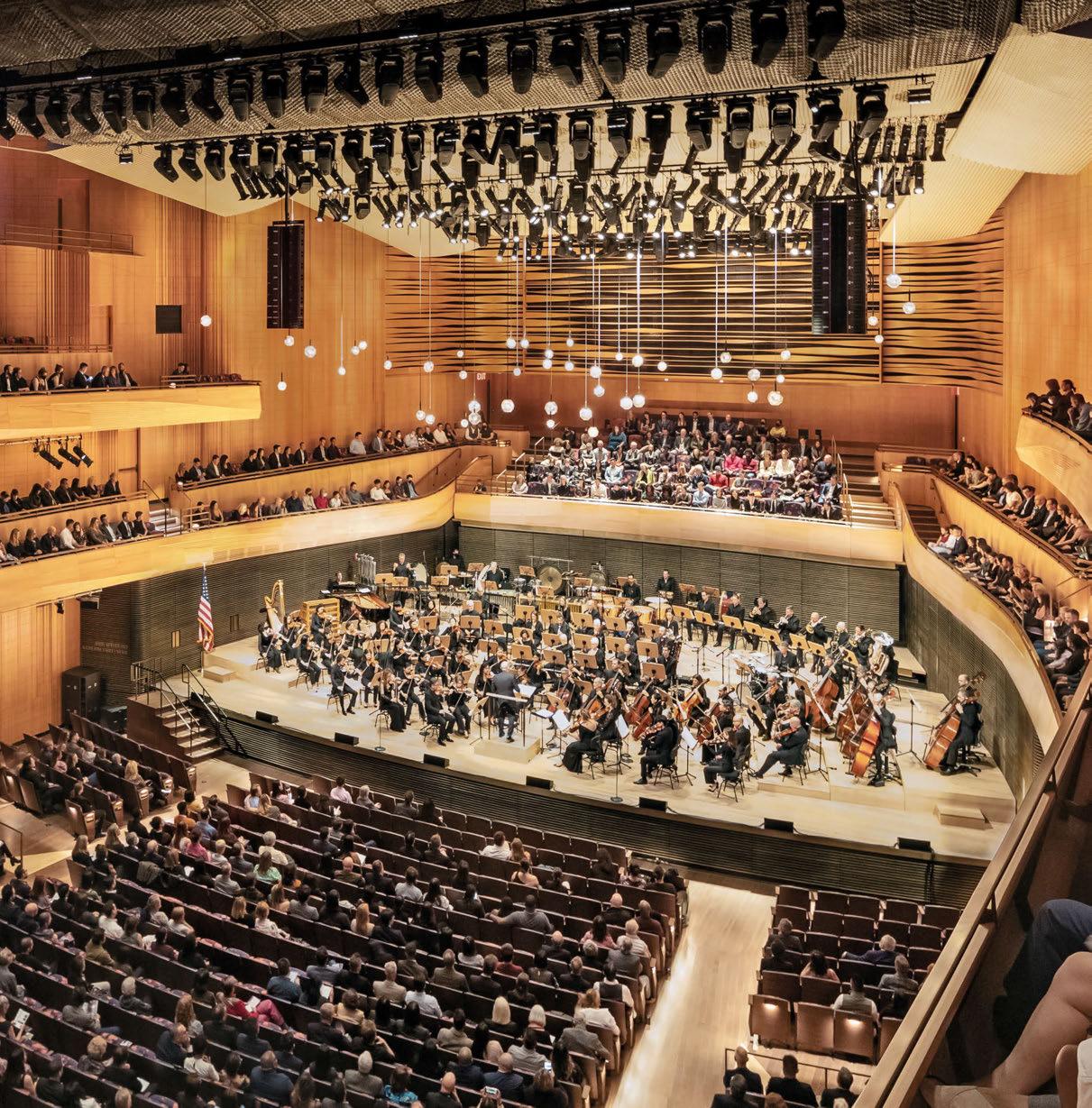





Geffen Hall’s reputation demanded a high-performance loudspeaker system that did not draw attention to itself. Several professionals at all levels throughout the install and specification process, including AVI-SPL integrators, demonstrated their full trust in EAW by choosing ADAPTive technologies such as Anna.
Like NYC’s Geffen Hall, ADAPTive’s capabilities are rooted in exceptional acoustic design, not heavy-handed DSP. By working with the laws of physics, ADAPTive technology gives audio professionals precise, full band control of the vertical coverage pattern, meaning everyone in the listening area hears even and coherent sound. Whether for stadiums and arenas of any scale, concert halls, or smaller venues, ADAPTive technology puts you in control.
Learn more about EAW’s Anna loudspeaker at https://eaw.com/products/anna/






networking, in addition to some new hazers.”
The shape of the rig with two trusses poking out of the front of the stage were the talking points of the overhead lighting rig. They were made up of SGM Q-8s and ACME Lighting Tornados. “It was the first time I’d used them, and I was impressed,” Reeve remarked.
Three flown pods of Martin MAC Aura PXLs provided eye-catching pixel map effects as one of the statement pieces of the rig. Over 100 ACME PIXEL LINE IP solutions provided robustness and additional dynamism to the lighting design. Reviewing his favourite looks, Reeve referenced On The Low “T he pixel effects across the pods get a lot of favourable comments. Immediately after the gig, people were asking how we did it. The second half of the show is high octane, and with the full cover of darkness, it is when the rig really comes into its own,” Reeve said, further citing the ‘family’ vibe fostered by the production camp. “Implementing the rig within the tight timeframe was a huge task and everyone went above and beyond to make it happen.”
Eleanor Waller, a familiar name to TPi readers having recently won SFX Operator of the Year at the TPi Awards, designed the special effects package for the show, translating the vision to a local French-based special effects and
pyrotechnics supplier, Grand Final Fireworks, on the ground to trigger. “Using local suppliers is sometimes the best option to overcome any hurdles associated with licencing,” Oladehin noted. The Grand Final Fireworks team comprised: Crew Chief, Marco Estacio; General Manager, Olivier Fleurette; SFX Lead, Benjamin Barlier; Engineers, Antoine De Martimprey, Richard Régis, Ludovic Girardin, and Stephanie Noware; Photographer, Frédéric Lepla; Riggers, Yoann Ramos and Aourell Krausse of H2H Rigging; and Road Crew, Nicolas Galgani, Nicolas Seconda, Jordan Sapotille and Quentin De Martimprey. Waller was charged with modernising the camp’s existing special effects and pyrotechnics package. After all, what is a Burna boy show without flames? “I had multiple video calls with the creatives, to understand their collective vision for the show, collaborating closely to find locations to place the special effects and pyro package in the most dynamic positions as possible to emphasise the production – creating eye-catching photo moments, while maintaining a safe enough distance for the busy stage was key.”
The package featured 14 Eco Jets, Sparks, Py ro Positions, and Liquid Flames each, as well as eight positions of special effects and pyrotechnics – four on the delay towers and four on stage – a full aerial display, as well as four five-finger effects on the delay towers for
Artist Manager, Bose Ogulu with Creative Director, Ronami Ogulu; Creative Director, Harrison Dent with Production Lead, Temidayo Oladehin; Monitor Engineer, Joshua Adeyosoye with Artist Manager, Bose Ogulu; Monitor Engineer, Durien Mensah; RF Coordinator, Alex Legge with Patchwork London’s Eluned Ashwood, Ryan Lowe, Calum Mordue and Kieran Edmonds; PA Technicians, Tom Chitson, Jack Blenk, and Phil Whitaker. Opposite: Nissi Ogulu with Musical Director, Emmanuel ‘Manny’ Abiola-Jacobs.
monolithic flames. “Amplifying Burna Boy’s music with flames is iconic,” Waller noted. “The team love their special effects and pyrotechnics, which I appreciate, and their usage compliments and enhances several moments of the show.”
Case in point is the Sparkular Guitar at the top of the show. “I pushed for the waterfall effect. We wanted to immerse the audience, which is how we came across putting some of the equipment across the delay towers as an extension of the stage design. I’m really pleased with the outcome,” Waller enthused.
IT’S PLENTY
Creative Technology Video Lead, Tom Walsh, oversaw the deployment of ROE Visual Black Quartz LED panels integrated with Megapixel HELIOS processors, that made up the video wall. “ROE Visual Black Quartz LED panels are some of the best LED panels in the business and Megapixel HELIOS processors are super flexible, allowing us to meet the creative brief of flipping the IMAG feeds so all the content feels like one big canvas, with the IMAG images mirrored.”
To this end, there was a mixture of video content – ranging from live feed, live feed straight to camera, and live feed manipulated by Resolume media servers with several filters and effects.
No stranger to outdoor spectacles, all of CT’s inventory – from LED screens to cabling and infrastructure – was suitable for an outdoor deployment, with additional wind bracing behind the screens, including distro tents behind each screen.
The video crew included: Video Crew Chief, Thomas David Hewitt; Media Server and Network Technician, Jay Crane; Camera Director, Oliver Bowring; Camera Racks Engineer, Joe-Lee Coupe; Camera Operators, Liam Daysh-Holmes, Joshua Jenkins and Cale Brock; and LED Engineers, Alannah Hayes, Alexander Roberts, Arkadiusz Wegrzyn, Bartlomiej Kubisz, Christopher Kinrade, David Novak, Gary King, Jon Robert Priest, Matthew Mark, Michael Smith, and Paul Mahon.
The camera packaged included two long lens cameras at FOH, additional cameras in the pit, and a PTZ package covering the action on the stage.
Additional remote-operated PTZ



Are








‘spy’ cameras were dotted around for the automation, stage management, and monitor engineering teams to use to view the action on stage and provided an additional layer of safety.
“Automation is used amid scenic changes as well as the primary artist reveal at the top of the show,” Walsh explained. “It’s a tight stage with a lot going on but it’s also a music-first show, with many accomplished and talented musicians, backing vocalists and dancers – which makes for a spectacle.”
Other key members of the production team included: CrowdLED PM, Rick Timmermans and Operator, Martijn Van Summeren; Riggers, Seth Cook and John Dunn of H2H Rigging; Upset Staging’s Gregory Smith and Set Carpenters, Benjamin Bavington-Allem, Luke Taylor, James Forsyth, and Lucy Gallagher; Lead Backline Technician, Jay Matthew Olanipekun, assisted by Jonathan Turner, Emmanuel Ojie, Jeremy Okai and Kyle Drakard; Merchandiser, Stephanie Sergent of Nylon; Communications, Mark Isbister of Team Audio; Video Director, Gabriel Jedd; Fly By Nite Truck Drivers, Adrian Collins, Duncan Bain, Phillip Chapman, Eddie Waring, Karl Dodd, Alex Freeman, Andrew Jones, Robert Quinn, Robert Atkin, Caleb Portlock, Simon Couldry, Harry Sigden, Natasha Koziol, James Rees, Simon Tandy and Garry Thorne. “It’s a
privilege to be involved in this show; I don’t take this role for granted,” Oladehin said. “I’ve mixed at the GRAMMYs, the UEFA Champions League Final, and there are artists that I have met and had the pleasure of mixing like Dave, Brandi, Toni Braxton, 21 Savage, Youssou N’Dour, Nile Rodgers & CHIC, all thanks to Burna Boy. This show was the first time I’ve been the PM for parties A, B and C, doing the biggest job I’ve ever done in one of the biggest venues in the world. It was a pinch me moment.”
With a strong gospel theme running through the camp, following the record-breaking show, many of the crew travelled back from Saint Denit for Easter Sunday to work with their local churches, before heading to Manchester’s Coop Live for another one-off show the following day – squeezing a stadium-level production into an arena before jetting off Stateside. www.onaspaceship.com www.hephzibahproductions.com www,patchworklondon.co.uk www.southby-productions.co.uk www.siyan.co.uk www.up-set.co.uk www.ct-group.com www.crowdled.net www.flybynite.co.uk www.tamtam.catering www.grandfinal.fr www.teamaudio.co.uk





























The vocal powerhouse embarks on his biggest tour yet, with a dedicated team made up of his own friends, a 6ft 5in teddy bear and an aptly nicknamed video screen, ‘Puck Norris’.


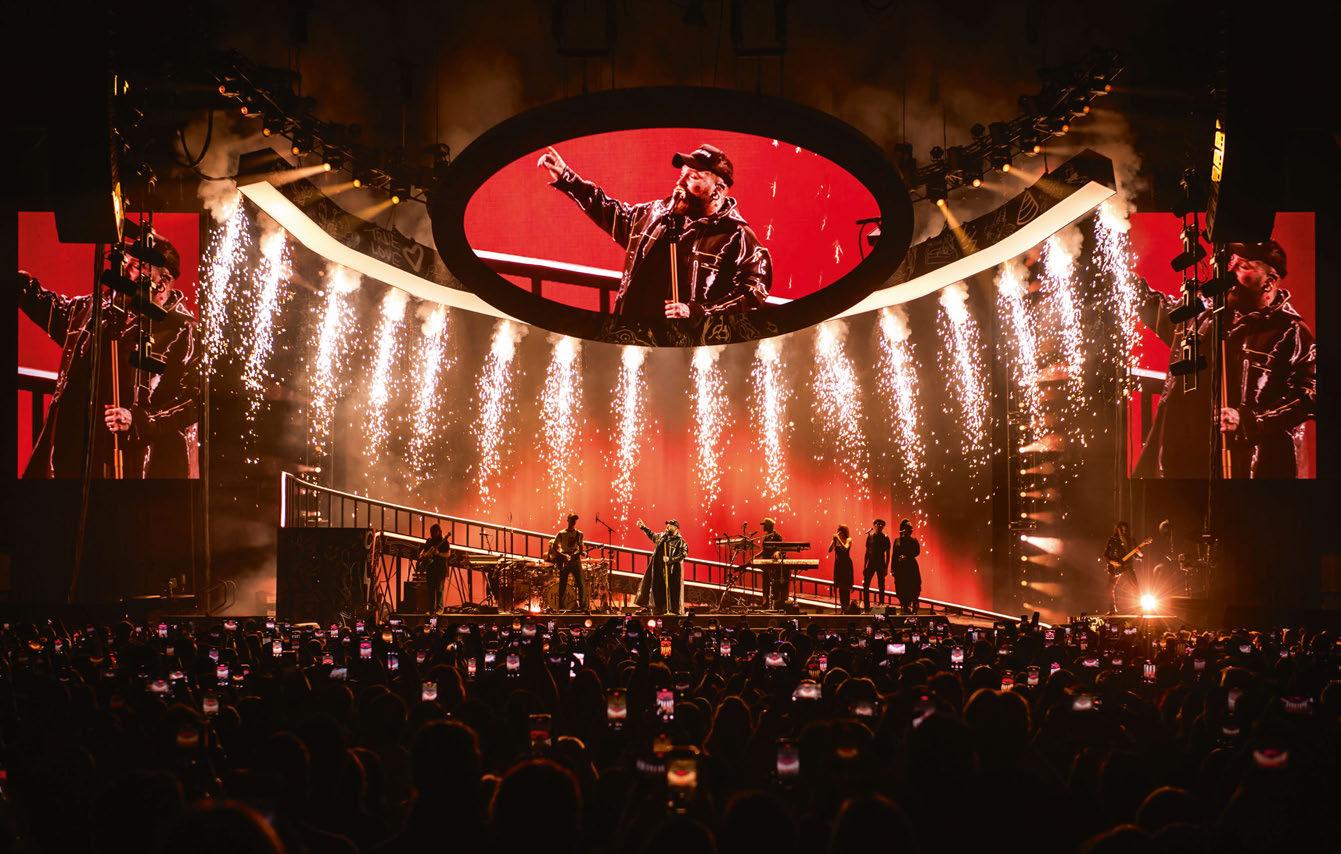
The path from YouTube covers to worldwide success is one that has become increasingly well-worn in recent years, with some of the biggest stars of the past decade beginning their careers in their bedroom with a guitar.
Teddy Swims’ emergence at the top of charts worldwide also began online, and with his popularity now seeing him perform at the biggest arenas in Europe. TPi caught up with his team at Co-op Live to gain an insight into the complex production behind his biggest shows to date…
Meeting TPi at the gate was a familiar face; Production Manager, Rob Bright, who has known the artist for several years.
“He is incredibly talented, so I always hoped that he would get to this level,” Bright commented. “Teddy would always say that he would love to bring me out on the road when it was possible for him – and then the call came. It’s great to now be here, doing a production he is worthy of and selling out these venues.”
Aiding Bright and his 36-strong crew were technical suppliers: PRG (lighting and video), TAIT (staging), Clair Global (audio), Pyrotechnico (special effects and pyrotechnics), Co-Pilot (playback), Fly By Nite (trucking), TAWBOX (creative) and MMBand Services (bussing). “I have worked with many of the suppliers on this for a long time and I wanted to bring people onboard who I knew I could trust,” Bright explained. “All our suppliers have a good realisation of it not being just
about the gear, but how well it tours, which has been a game changer – especially with Teddy’s, and our, packed schedule over the past year.”
With experience of making quick adjustments to a tour following the rapid rise of an artist from his work with Lizzo, Bright was well equipped to handle the ascent of Teddy Swims, telling TPi it has almost become his ‘niche’ in recent years.
He elaborated: “I could not have done it without the expertise of Teddy’s Manager, Luke Conway. He has always listened to me about the logistics of making sure the sheer number of shows can happen, while making sure the crew are looked after and happy,” Bright said.
“T he schedule has been slammed, but he checks with me, and the production crew first, asking us if certain things are feasible and that is because he cares about the impact it has across the board,” he added. “I’d like to think that everyone feels that they are part of something special. I’ve been very careful about the people I have brought into the camp because we want that longevity – and the great thing about Teddy is that, as long as he is performing, he wants his crew along with him for the journey. Everybody is here because they want to be here, and I think there is something special about that.”
Having worked together on over 600 shows since 2019, Bright’s right-hand man, and true-
blue tour partner, was Stage Manager, Shaughn ‘Shoe’ Adamski. “Ever since I met him, I haven’t done a show without him; I couldn’t do a show without Shoe,” Bright smiled.
“Rob and I are a good team,” Shoe added. “He is my boss but he is also one of my good friends and we work very well together. We have a relationship where we both respect each other and we know what each other expects from a show.”
Taking charge of the unloading and loading of 11 trucks, Shoe’s colleagues ensure he is supported – with Rockpool Touring Catering even hand-delivering meals to him if they notice he has been too busy to see them that day. “Maureen and Pete are so lovely; they know I’m running around all-day, so they come find me to make sure I eat,” Shoe laughed.
The stage manager even got to take centre stage for some stops during the tour, in a life-size teddy costume that fit exactly to his measurements. “The bear is 6ft 5in – it was designed for the BRIT Awards and will show its face at some shows,” Shoe added.
“TAWBOX knew I like to do a bit of performing, so I got drafted in. I was more than happy to do that, and the fact that everyone is such good friends really helps when the schedule is this packed. Teddy even performed at my wedding.”
With TAIT conducting the staging and automation on the tour, it was the stage manager’s first time working with the company,
Easy cleaning. Easy maintenance. When the show must go on, trust opticalCON.


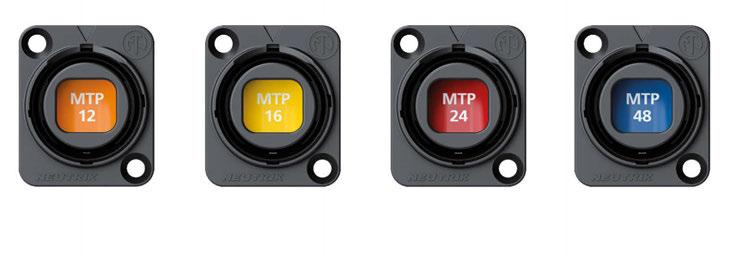
Reliable, ruggedised fiber optic solution. Available in 12-channel, 16-channel, 24-channel & 48-channel



he was particularly impressed with the company’s efficient communicative skills and the seamless integration of its riser and ramp setup for the gig. Kiyanna Brown, Project Manager at TAIT, described the company’s involvement: “The TAIT team was approached in November 2024 to work with Bronski and Amber at TAWBOX and Rob Bright on the show,” she recalled. “Everything we created was custom including a curved riser and ramp setup that flows from stage left to stage right. The larger stepped circular risers offered an elevated surface for Teddy, his band, and backup singers and were integrated with lights that added an extra visual element.”
Enveloping the risers was a curved ramp that led up to a lift and featured an LED handrail to lead Teddy upstage. The TAIT team also created a custom oval video puck that moved throughout the show, nicknamed ‘Puck Norris’ by the crew, not forgetting two automated kabuki drops. “This was our first time working on a show for Teddy Swims, so we were excited to start working with him as he grows as an artist, while continuing to build our relationships with the creative and production teams, who have been incredible to work with,” added Brown.
Describing the upstage ramp, Shoe noted it was an intricate design that had to be
assembled flawlessly each show. “There are a lot of custom pieces incorporated into this set, but the show wouldn’t work without it all – the whole design speaks for itself,” he added.
Helping establish Teddy Swims as an arenalevel artist, TAWBOX helped curate a stage design. “We started chatting with Teddy early on to gage his likes and dislikes and then went away to figure out what we could do to tick all of the creative boxes we all loved; we then presented our idea, and the rest is history,” Amber Rimell, Creative Director at TAWBOX recalled. “We wanted the design and creative to have a personal Teddy touch; we wanted people to see the stage and know this is a Teddy Swims show. As fans scroll back through their memories, they can distinguish the design. The identity, the skin on the scenic finish, was based on Teddy’s tattoos. It was also about creating moments for Teddy where he walked around his stage and could see he was encased and surrounded by his memories.”
The team at TAWBOX also wanted to showcase Teddy’s musical influences in the design. Creative Director Bronski explained: “Having the band right in the centre of the stage, encased in the curved ramp thrust, really drives the musicality of the show, and
the importance of his day one friends being on stage with him. The curved trusses and puck accentuate this, too.”
Having begun their work with Teddy Swims at MTV EMAs in 2024, the Co-Op Live show felt like a full-circle moment for the creative house.
“We enjoyed the process,” Rimell enthused. “The entire team are brilliant, and it was such a wonderful environment to work within. The creativity flowed and it was all hands-on deck.”
Bronski added: “It was a great experience. Teddy and the team are so collaborative and up for trying new things, which made our job even more enjoyable.” Supporting Rimell and Bronski’s creative vision of the show was a lighting design from Louis Oliver and is looked after on the road by Lighting Operator, Dylan Shaleen whilst having been programmed by Nikita Jakovlev and Oliver.
“I was brought onto the show by Bronski and Amber in November of 2024, a call with Luke, Teddy’s Manager, sparked an immediate connection, and we began shaping the lighting design for Tawbox’s production design. This was my first project with Teddy, but the shared vision and trust built with the team made it a seamless fit,” Oliver commented. “TAWBOX laid down a vision that screamed Teddy: soulful, raw, and real. We wanted to make the stage feel like an extension of his music, which is

MAVEN is the ultimate in flexible, modular, and compact design. As a smart DSP-platform, MAVEN is the perfect choice for any production environment, whether you're working in live sound, installation, recording or broadcast.
Show (Las Vegas)
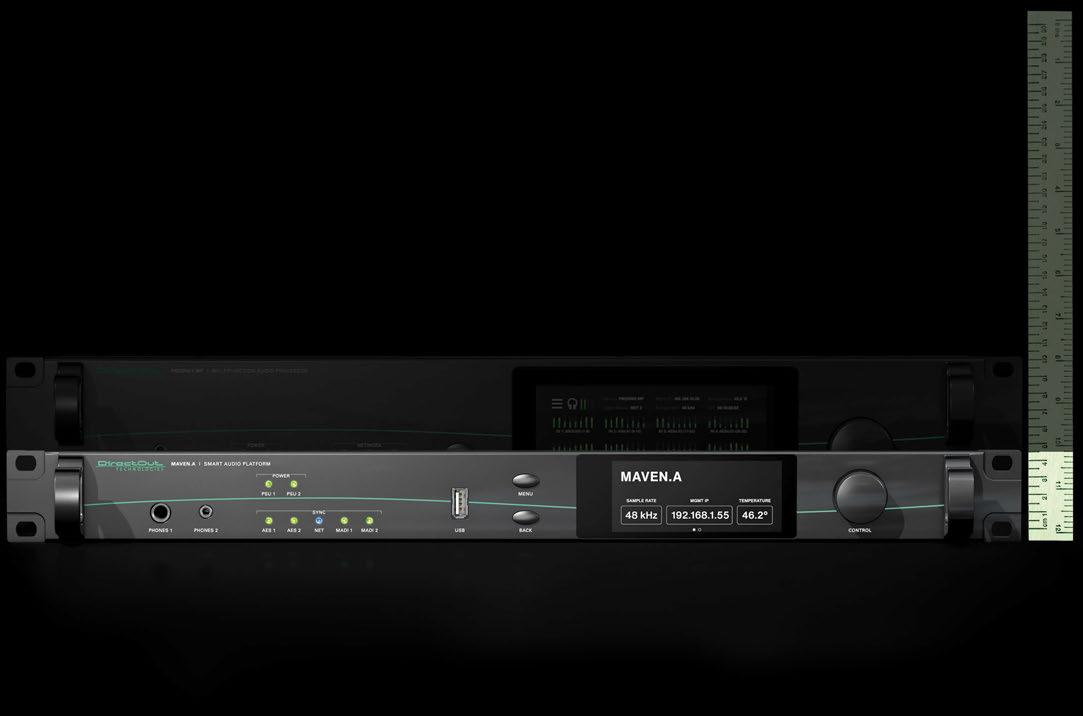
MAVEN -SHIPPING NOW Choose what you need and make it your very own MAVEN. www.directout.eu
(Joseph Electronics)


� IP65 rated for protection against
and particles
� RGBW plates for enhanced color performance
� Increased pixel count for more creativity
�









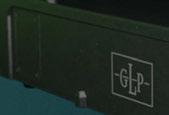







warm and intimate in one moment, but bold and electrifying the next.”
The lighting design process took six weeks, with Oliver utilising Vectorworks for drafting before bringing in Jakovlev to work together using Depence for the 3D rendering and programming. “From start to finish, over the three months, the constant dialogue ensured the lighting aligned with TAWBOX’s and Teddy’s vision,” Oliver commented.
Lighintg Operator, Shaleen began his journey with the camp as a programmer. “It’s been mindblowing to be a part of how he’s grown in such a short time. We’ve gone from clubs to A-level arenas, and I only joined the camp in 2023,” Shaleen commented.
Shaleen runs Oliver’s lighting design from an MA Lighting grandMA3 console and with the help of the tour’s programmers, has configured his desk to run in a Mode2-friendly way.
Centring around the theme of the ‘Teddy’, the lighting remained soft, rounded and avoided any hard-edged beams. The chosen fixtures included Ayrton Huracán Profiles and Perseo Profiles, SGM Lighting Q8s, TMB Solaris Flares,
GLP Fusion X-Par 12Z, Robe Spikie and vintageinspired Molefay units.
“T he Huracán is built like a tank and is able to cut through, so we have used them as followspots on this, utilising a GroundCountrol FollowSpot system,” Shaleen added. “PRG has had the same consistency every day. Having systems that are the property of PRG has meant that we can give any feedback and they make updates to those systems. They have been great.”
Oliver’s design flows in acts, with the beginning of the show featuring tungsten hues, and when the second kabuki drop occurs the show plunges into darker colours, with the design featuring blue for the first time and the downstage video wall being revealed. “Everything is subtle. We have lighting incorporated into different set pieces so it’s cool getting to work with the different elements and utilise it to build the desired rounded look,” Shaleen added.
Adding to the visual appeal was a special effects and pyrotechnics package assembled by Pyrotechnico. The company’s lead on the project, Mark Jones, explained how the unusual
staging shape provided a challenge for the effects. “The way the stage flows up the ramp meant that we couldn’t position each shot at the same elevation, so we worked with TAIT to put holes into the set where the pyro could go, while also being safe – so now when we shoot the special effects, it travels upwards.”
With the effects fired from an MA Lighting grandMA3 and a Pyro Digital Controller, the special effects and pyrotechnics assortment included Mines, Comets, Gerbs, Flame Units, Low Smoke and Confetti.
“W ith a lot of things happening, it’s important to look at the things people don’t expect to happen to ensure safety – from lights and set pieces to making sure I don’t burn holes into anything,” Jones commented.
“It’s important to make the show as safe as possible – which is why there are three of us on the team to ensure no stone goes unturned.”
Sharing his favourite moments of the set, Jones cited the flames: “I’m the one doing it, so it’s exciting to set them alight,” he added. “The show is fun; Teddy Swims definitley knows how to put on a show.”






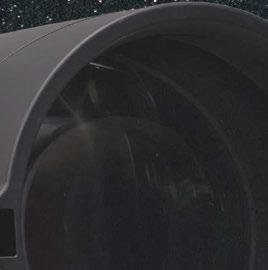




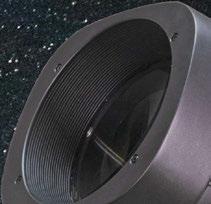





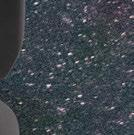


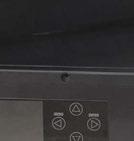

500 W Laser Source hybrid moving head
• angle 0.38° - 12.5°, up to 40° with effects
•1‘150‘000 lx @ 20 m (0.38°)
• infinite Pan / 265° Tilt (8-16 bit)
• 19 static & 12 rotating gobos, gobo shake

• two prism wheels (Three radial, four linear prisms)
• three frost filters on prism wheels, stackable











100 W Laser Source beam moving head
• angle 0.7°- 5°
•170‘000 lx @ 20 m (0.7°)
•540° Pan / 270° Tilt (8-16 bit)
• 19 static gobos & 6 rotating effects, gobo shake
• 16 radial & six linear prism (stackable)
• frost filter, bi-directional rotation




Taking care of the video on the tour were Video Crew Chief, Steve Jones, Video Director, Jamie Jacobs, Disguise Operator, Joel Wright and Disguise Video Programmer Eric May.
“When we first arrive on site, Steve is already ahead of the game—handling truck logistics and making sure our spaces are properly marked. Once we’re in, Joel and I work together to set up the entire video system. That includes the LED processing, media server, CCU and transmission racks, the switcher desk, and the PTZ camera control station,” Video Director, Jacobs said. “As the day progresses, my primary focus shifts to faxing out the cameras— checking levels, dialing in back focus, verifying tally lights and intercoms. During soundcheck, I update all PTZ camera presets and make any necessary color adjustments to ensure visual consistency across the system.”
The video setup is spread over two trucks, with the primary t railer filled w ith LED, for t he IMAG screens and upstage video content wall. The entire



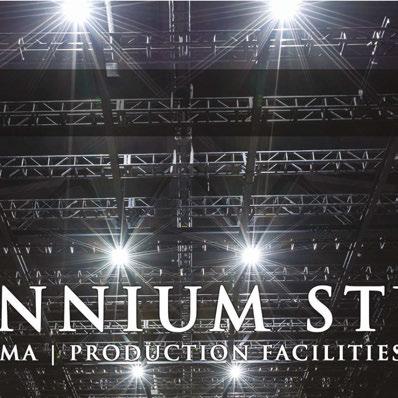





video arsenal consisted of 262 ROE Visual Carbon Series LED 5.77mm tiles, Brompton Technology Tessera SX40 Processor, Tessera XD Data Distribution, with a Sony PVM-170 video monitor and a Barco ImagePRO-4K Image switcher.
The camera set up was built to capture every moment with clarity and cinematic impact. At FOH, the team deployed two Sony HD cameras—one paired with a Canon 86x HD lens and the other with a Fujinon 99x HD lens which Jacobs said gave the team “exceptional reach and detail for dynamic long shots”. In the pit, a third Sony HD camera with a wideangle lens was operated handheld, allowing the crew to capture raw, intimate angles of the performance.
To complement these primary sources, the team added two Panasonic AW-UE150 PTZ cameras for flexible remote operation and three Marshall CV343-CSB compact broadcast POV cameras to provide unique, fixed angles that added depth to the visual narrative.
For control, a Blackmagic Design 4ME Constellation switcher was utilised in tandem with the 2ME Advanced Panel 20. Coupled with the Blackmagic Videohub 40x40 router, this infrastructure provided seamless video management with up to 80 inputs and
outputs—more than enough to handle any creative demand on the fly.
“Having a wide range of camera angles to cut between was essential in telling a visually impactful story,” Jacobs added. “It allowed us to not only cover the stage and crowd thoroughly but also to showcase the raw talent and emotion that Teddy and Freak Freely brought to the performance.
Running two Disguise servers for the content curated by TAWBOX, Wright said: “The servers take in Jamie’s content from the screens and then cut through Vision Mixer, which timecodes when it can be displayed. We have three, 4K outputs, one 1080p, and all of that is duplicated for backup.”
With a long-standing relationship with PRG dating back 15 years, Jones was pleased with the vendor’s performance. “We have an excellent relationship, and the support has been tip-top,” he reported. “Nothing is a problem for them, and I like that.”
Playing a crucial part in supplying the tour and providing a space for the camp to rehearse pre-tour, PRG has been involved in the Teddy Swims camp for many years, supporting his rise to stardom.
“We’ve loved working with Rob and his team again for Teddy Swims,” PRG Account
Manager, Gemma Jaques commented. “We have been supporting them for a few years now and it has been amazing to watch the artist on his incredible journey, growing from smaller Academy venues to these huge arenas. “As well as using our onsite rehearsal space The Bridge for another time, on this run they also showcased one of our most recent innovations – the GroundControl Multi system. They’ve continued to put their trust in us and we’re proud of the end result. This is the first tour in the UK that the equipment has been used on, and we have had some fantastic feedback to continue making the system the best it can be. It’s been a great job to be involved in and I am really looking forward to seeing where it all goes and what happens next.”
Ensuring the automation runs smoothly and is able to produce different visuals, including a spaceship, is the use of TAIT’s Navigator Automation Platform, which not only controls the gear but gives real-time positioning to sync up the larger video wall with the puck.
Automation Crew Chief Patrick Warrington also told TPi about the nine TAIT Nav Hoists utilised, as well as a chain climber lift.
“On paper, it’s by the book, but the use of




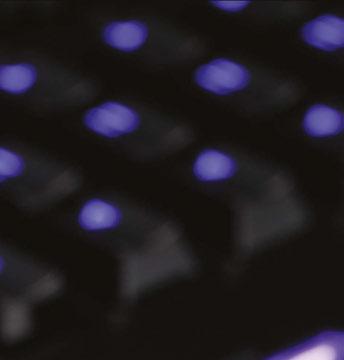



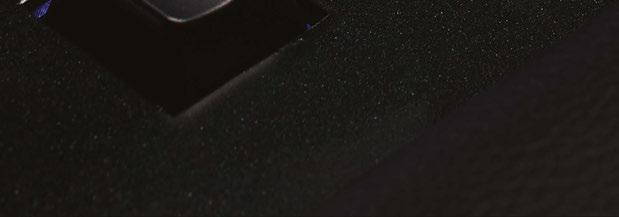


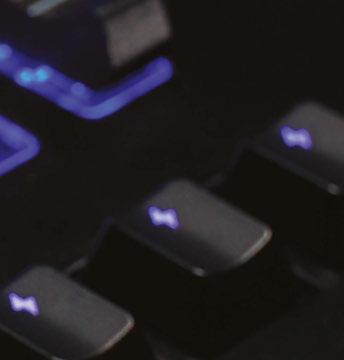


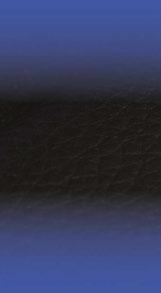










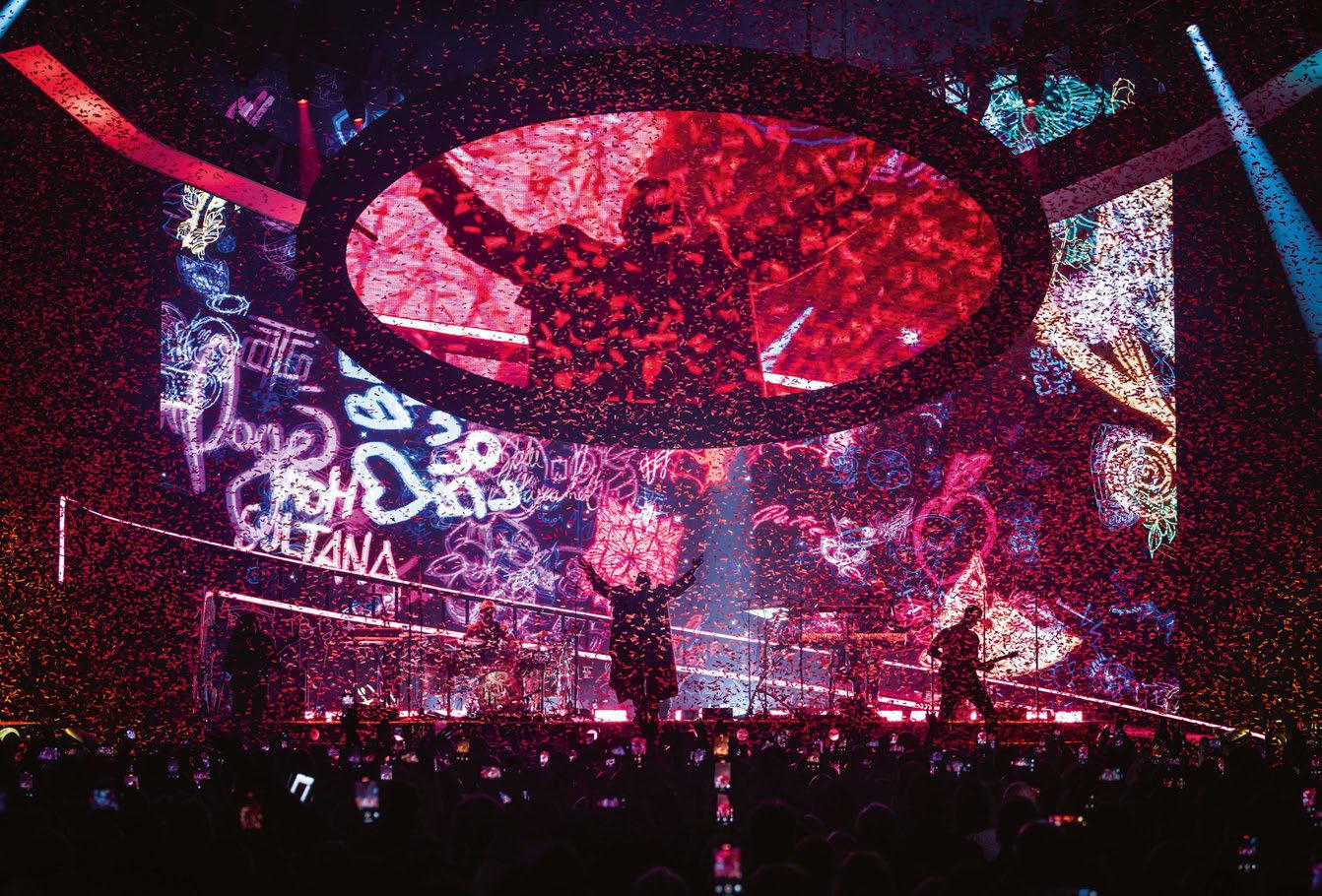
control integrators has meant that no matter what height our venue is on a certain day, it is easily adaptable,” Warrington noted. “We had a very smart control integrator who made a lot of back-end equations in TAIT Navigator, which is extremely powerful and made this device with equations galore; it takes all of the information from the venue that day and can do all of the hard work for us – it took him around 100 hours to complete the challenge, but this has revolutionised the tour for us.”
Warrington compared the work done to perfect the automation on the show to cooking, telling TPi that during the rehearsal period at Lititz, the TAIT team worked to create the perfect recipe for the moves. Looking forward to the future of automation in live events, Warrington said: “I think we’ll see it become more prevalent. At the moment, it is still the stepchild of the industry and often gets added to shows last, but everyone wants it. I can definitely see the limits of automation being pushed further, while also appearing on those smaller shows.”
Filling arenas with the artist’s soulful tunes was a strong audio crew, supported by Clair Global, Justin J. Weaver, Clair Global’s Senior
Account Executive, commented on the company’s involvement: “We are thrilled to be supporting the entire Teddy Swims team on their global touring endeavours. From Teddy to Luke, Rob, the skilled audio engineers, and our crew – I can’t say enough about these brilliant individuals who strive day-in and -out to give their absolute best; it shows in every live performance and at every venue.
Watching this group start at club level & propel themselves to arenas is a ‘pinch me’ moment for everyone at Clair Global, and we are humbled to be a part of this journey.”
Drew Thornton is positioned at FOH working from an Allen & Heath dLive S5000. “This desk is my old familiar; I’ve been exclusively on Allen & Heath since 2017,” Thornton explained. “When picking a desk, it was important for me to get as much as I could within the desk and the options in this one are amazing.”
Clair Global supplied the tour with the mixing desk, in addition to a d&b audiotechnik PA system, comprising KSL main hangs with SL-GSUB subwoofers. Thornton utilises no outboard effects, with only Waves servers running Sound Grid. “My focus is on one mix –one mix to rule them all, one for the PA, one for broadcast,” Thornton explained. “I’m a huge fan
of consistency, and sound has an interesting organic process – maybe I’m a glutton for punishment and I like to get the consistency the hard way, but that is just how I do it. The KSL has been so clean, which helps.”
Thornton told TPi that his philosophy on this run has been to mix the show like the crowd couldn’t tell what instrument is being played. “The joke is that if a certain instrument is loud, that’s what that engineer plays, but for me, there is so much talent on stage,” he explained, adding, “I want to showcase everybody and make sure every single member of that stage sounds big.”
With the show peaking at 102dB, Thornton explained that he likes to keep the mix at 99dB, to keep the show enjoyable, without compromising ear health. “It can be easy to make the show too loud, especially when you’re on tour doing as many shows as we have. I want to do this long-term, without hurting my ears.”
On t he other end of the line and situated side stage is Justin Walker, Monitor Engineer, who mixed on a DiGiCo Quantum 338 Pulse.
“T he support from Clair Global has been amazing. No matter where in the world we have travelled, they have supported us.. There was a time last summer where we had three rigs out,

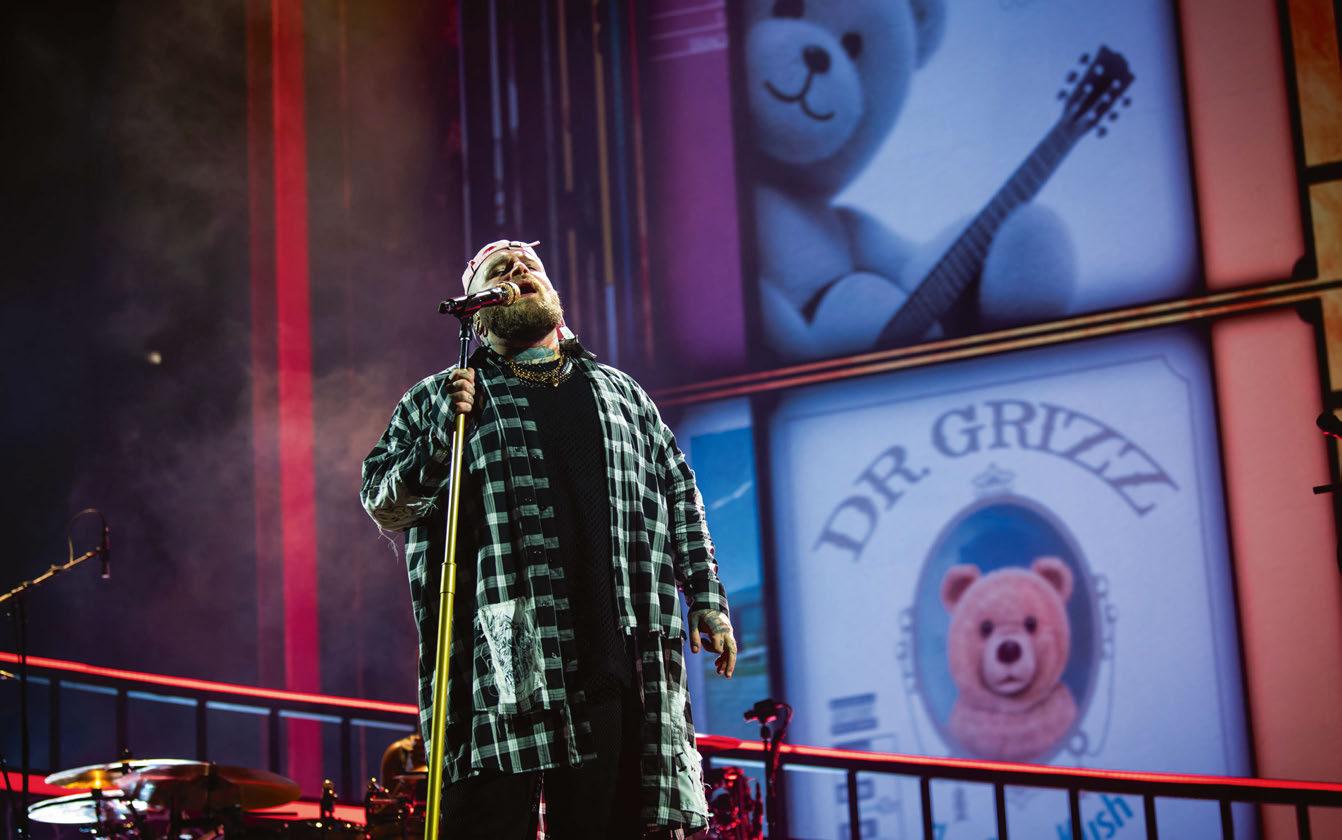
in different parts of the world – and that was the support we needed,” Walker stated.
Taking care of nine musicians on stage, the engineer focusses on blending the mix together, so that the band can ‘vibe of’ each other. The band were on a mixture of 64 IEMs, Ultimate Ears and Jerry Harvey in-ear moulds. Teddy specifically was on 64 Audio’s A18S, in which the company made custom gold ears for the singer. “We gladly accepted Teddy’s challenge to create this ultra-bespoke A18s, adorned with solid 14k gold faceplates handmade by our jeweller partner in Ukraine, and engraved with Teddy’s logo, this will live on as one of our all-time favourite projects,” 64 Audio’s Filipp Sklyarov, commented – excited to be brought into the fold.
Ut ilising Shure Axient Digital PSM, the production was one of the first tours to take the system on the road. “We started with two weeks in rehearsal and have used it ever since; we’re using the WMAS technology, which has been a game-changer for us,” Walker added. “I have 20 mixes total across five quad transmitters, which means I only need to find five carrier frequencies across the system.”
Similar to Thornton’s mix, Walker likes to keep everything in the desk but utilises Waves for processing to clean up room noise on the vocal channels. “I just moved up to utilising Quantum Processing this year, so I am leaning
on the Mustard Channels – the transition was seamless, and it helps that the Quantum consoles are so pretty,” Walker continued.
Joining the camp before Teddy’s debut album was even released, Walker has been with the camp for the ride. “It’s honestly amazing to see the growth and be a part of the growing production; getting to hear the crowd roar the words makes all of the hard work worth it,” Walker said. “I’m looking forward to continuing and being a part of it. I feel like I’m at the point in my career where I am riding the wave”
Self-described as the spine of the show, Jonah Wei-Haas takes charge of the Playback on the show – looking after backing tracks, cues and clicks, as well as overseeing vocal processing. Not to mention sending out timecode for other departments. He also takes on responsibility for all six of the keyboards, ensuring they run smoothly for the show.
The engineer utilised Ableton Live for the feat and runs a completely digital rig through MADI. “Not running analogue means that we’re able to run at a lower latency and all of our lines can travel through ethernet. It has been a cool learning experience for me,” Wei-Haas said. “This sort of networking makes perfect sense for bigger shows; it means we can run at a higher sample rate. It’s been really exciting to be a part of this as it grows. I started when we were 27 people and that was only a year ago.”
Tour Manager, Curtis Baldwin – also a longstanding member of the camp – ruminated on his whirlwind journey with the artist: “My first tour with Teddy Swims was January 2020 doing small rooms, and then he offered me a full-time role, which nobody had done before,” Baldwin commented. “He even took care of me during the COVID-19 pandemic, which meant the world and it just goes to show what type of person he is. The rise he has experienced and where the show is now at, is so deserved. We continue as it grows with our original ethos to be as kind as possible.”
Teddy Swims continues his busy schedule right until the end of the year with his elaborate production, multiple award shows, festival appearances and even a baby boy on the way. His dedicated crew will continue their journey with him, made up of hometown friends and experienced professionals, supported by suppliers that go above and beyond to pull off the eclectic artist’s vision.
www.teddyswims.com www.taittowers.com www.clairglobal.com www.prg.com www.pyrotecnico.com www.copilot.systems www.tawbox.com www.flybynite.co.uk www.mmbandservices.co.uk





































Following the much-anticipated research paper from the Tyndall Centre documenting Massive Attack’s sustainability-focussed performance at Bristol’s Clifton Downs, some of the key players in the project reflect on the journey and muse on what the findings could mean for the wider entertainment industry.


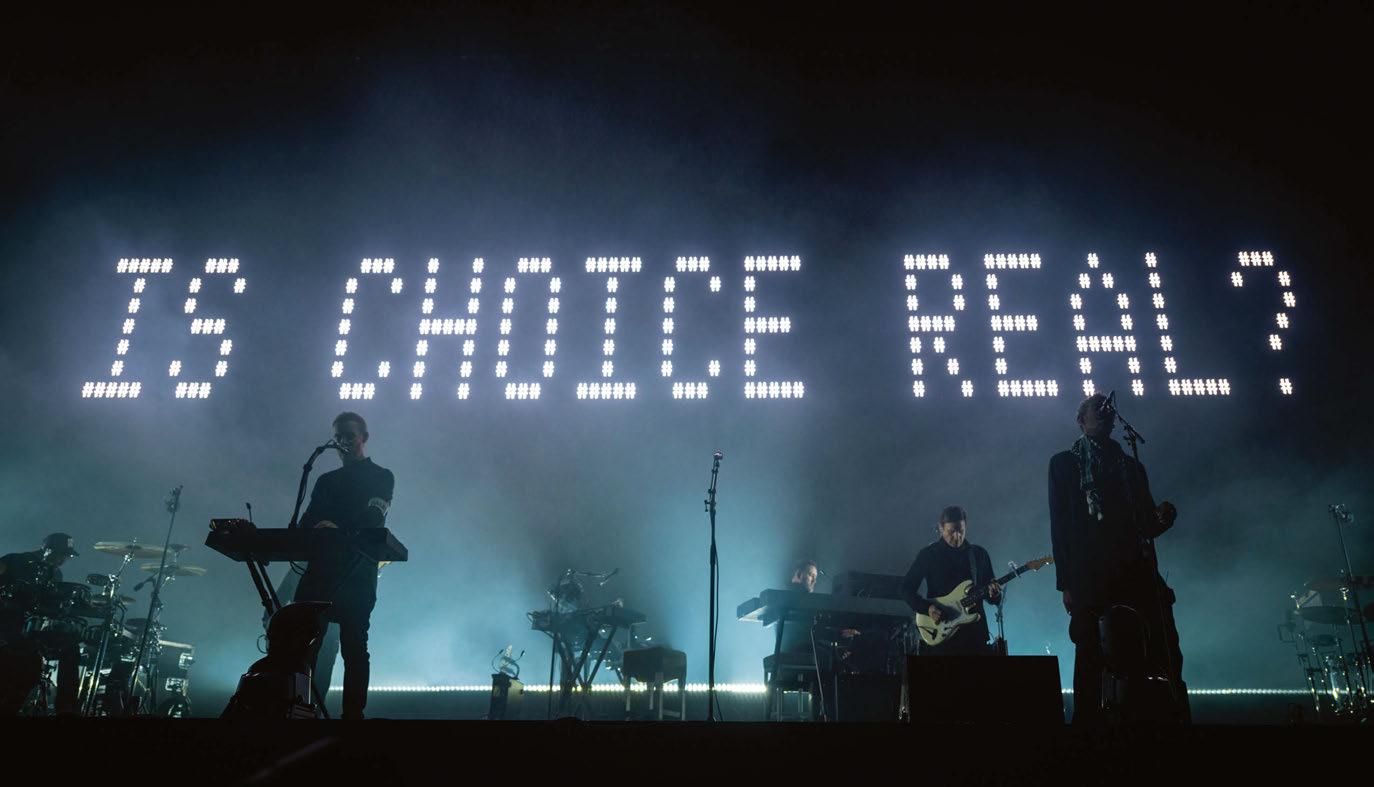
The topic of sustainability in the outdoor events space is not new, with the UK and European festival industry often flying the flag for ‘out of the box’ thinking when it comes to lowering the environmental impact of live shows. These incentives have varied in scale dramatically but one common thread we often see is that all these actions are there to demonstrate that productions don’t have to always be run the ‘same old way’ – from questioning how to power a show to the types of equipment used during a performance.
This certainly seemed to be a recurring theme speaking to some of those involved in ACT 1.5, with everyone excited to cast off the shackles of ‘this is how it’s always been done’ as they put on an outdoor performance that aimed to reduce carbon emissions.
ACT 1.5 – in reference to the United Nations Paris Agreement on Climate Change’s 1.5° decarbonisation measures – is headed up by Lead Producer, Mark Donne in collaboration with Robert Del Naja and Massive Attack with major support from the band’s Manager Marc Picken and Jim King of AEG Group.
The project’s first event took place in August 2024 on the Bristol Downs, headlined by Massive Attack with support from DJ Milo, Sam Morton, Lankum, and Killer Mike.
“T he origin of ACT 1.5 was quite simple – Massive Attack had reached the point of never wanting to tour again because of their awareness of the climate issues and not seeing any action within the events sector to counteract these problems,” explained Donne. Having known the band for a long time, when
they expressed these feelings, Donne made the point that if they were to completely move away from live shows, the industry would “always find another headliner” – making the point that with the bands clout they could enact real change.
Donne, alongside the band, started to consider ways to tackle the affect that live events have on the environment head on. He used audience travel as an example. By most estimates, audience travel makes up 80% of all events carbon emission but is often not discussed within the sector.
“If any other sector had 80% of its emissions coming from one place but only ever discussed the remaining 20%, they would be ridiculed!” he asserted, making the point that for ACT 1.5 movement to prove their worth, the collective had to consider every single aspect of an event to make any real change.
Key to ACT 1.5 and the resulting Bristol event was the Tyndall Centre for Climate Change Research. Donne and the ACT 1.5 team back in 2019 had commissioned the Centre to develop a decarbonisation roadmap for the live music sector – the Super Low Carbon Live Music Roadmap. This set targets for different sources of greenhouse gas emissions (GHGs) associated with putting on live events that align with the scale and urgency of meeting the Paris Agreement. It was this roadmap that provided the framework for ACT 1.5.
During the build and at the show, data on energy use, artist and crew travel, equipment transport, audience travel, as well as food and goods consumed was collected by A Greener
Future (AGF) and compared against the Tyndall Centre’s Super-Low Carbon Live Music Roadmap. “The Tyndall Centre work in many different sectors, including construction and maritime shipping, meaning they came into the project with an objective scientific approach,” highlighted Donne.
Si x months following the Bristol event, in February 2025, the Tyndall Centre delivered the report – revealing the data gathered for the entire industry to pore through and gain an insight into what was achieved. It’s also worth noting that the Bristol event was only the first phase of a wider project, with the second phase exploring how the sustainability model worked across the host city of Liverpool for an event that took place in November – the results of which will be published later this year.
“Massive Attack approached us back in 2019, discussing how they could decarbonise their own tours and create something to accelerate action in the sector,” recalled Tyndall Centre’s Carly McLachlan. “It’s been exciting that they have kept us involved all the way through and they’re interested in what we thought at the outset. This collaboration continued from touring to the Bristol event with Tyndall Centre speaking to people within the production before and after the show.”
Post-event, she reflected on what it meant to be part of this production: “The thing that made me want to be part of this project was their commitment to making it happen,” she explained. “That’s what you need to undertake


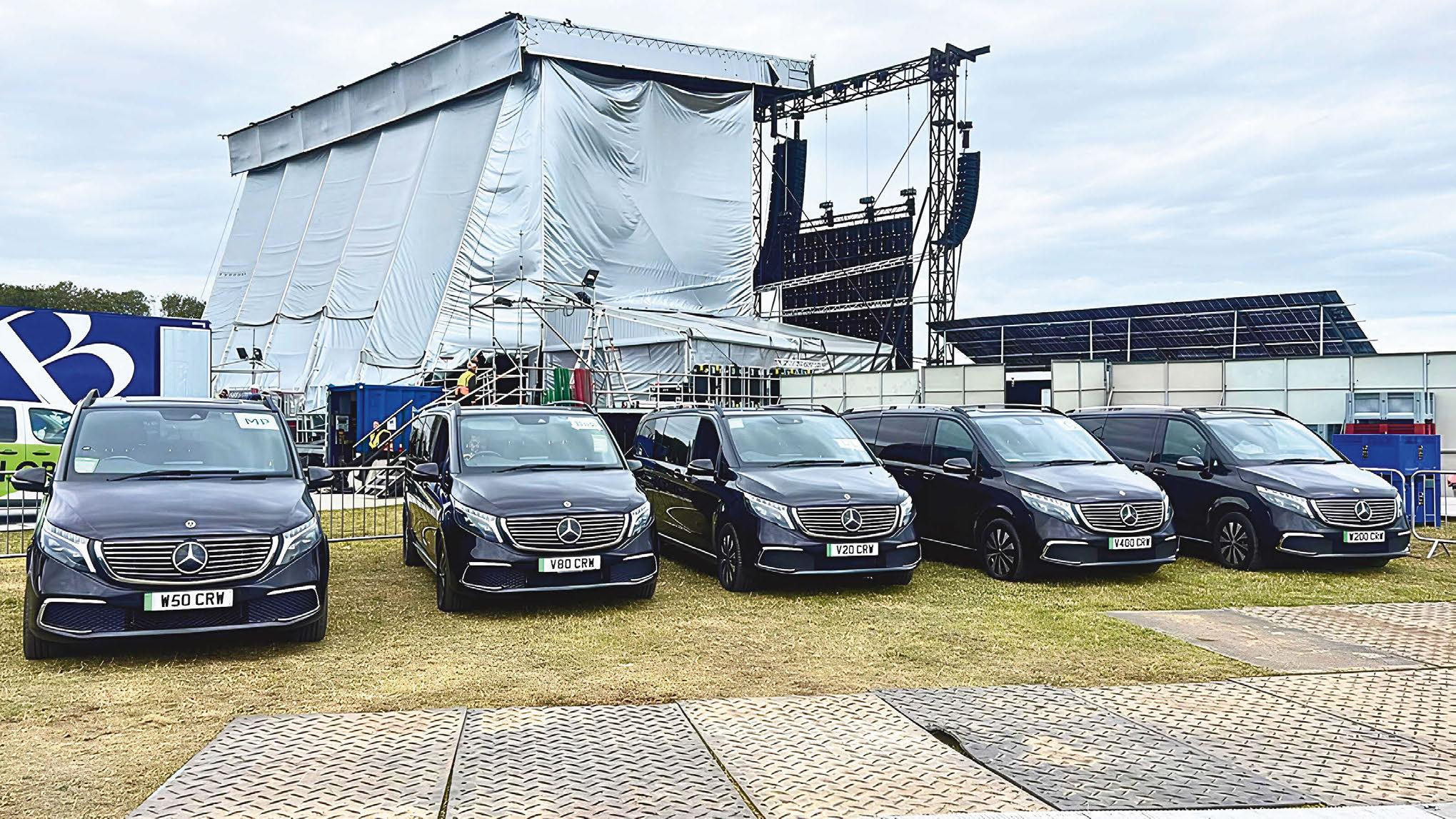





climate action – people at very high levels in the production were all committed to the core mission. Whenever we hit a problem, it had to be solved within that remit of it being super low carbon. You hear a lot of anecdotes from the sector where there’s one person trying to push an agenda, but whenever there’s a bump in the road, it gets dropped. However, that was not the case with ACT 1.5.”
In t he 30-page report, the Tyndall Centre’s paper outlined the key areas that were assessed during the project, including onsite energy, transport and food. All analysis was based on a side-by-side comparison with a hypothetical event where environmental measures were not prioritised. In the paper’s summary, it highlighted that due to the event’s battery-powered solution negating the need for diesel generators, the power emissions were 81% lower than the hypothetical show.
A f ull plant-based offering for all food on site also had an incredibly positive effect accounting for an 89% difference in emissions compared to a more t raditional food offering that supplied vegetarian along with white and red meat options.
Travel was also a key focus for the event, with emissions for travel by artists and crew down by 72% below to the hypothetical event. The production also enacted several measures to lower the impact of audience travel with incentives for train travel as well as running a later service and the deployment of electric shuttle busses.
A Greener Future was brought into the fold thanks to Massive Attack’s Tour Manager, Jamal Chalabi. As Chalabi heads of a
subdivision of AGF – A Greener Tour – he was keen to bring in AGF to oversee the data gathering of the report along with Event Sustainability Management. To gain an understanding of what it took to action such an ambitious data-gathering exercise, TPi spoke to AGF Founder, Claire O’Neill.
“T he most important thing when trying to get good data on an event of this scale is to make sure it’s done in collaboration with all the different departments,” commented O’Neill. “We were part of all of the pre-production and site meetings where we’d get to meet the different heads of department for various elements such as the site and production management as well as bar operators and those in charge of merchandising.”
Af ter the event, a small, dedicated team processed all the data. O’Neill was keen to give a shout out to this dedicated crew including Eloise Clarke and Alex Fintoni, who waded through all the data, as well as the work of Chalabi. “We also had huge help from Pauline Bourdon and the entire Team Love Productions crew who built the site and had done their CO2 analysis with us at AGF in previous years,” stated Chalabi.
Another key player who ensured communication between AGF, the ACT 1.5 production and promoters, AEG was Mark Ward of Proper Productions. “I was there to coordinate with all the various parties including Team Love and ACT 1.5 and to effectively project manage to ensure everyone got what they needed,” commented Ward.
“At the beginning of the project there was a bit of nervousness about the event,” continued Ward, explaining how some of the parties were worried about how ACT 1.5 was looking





















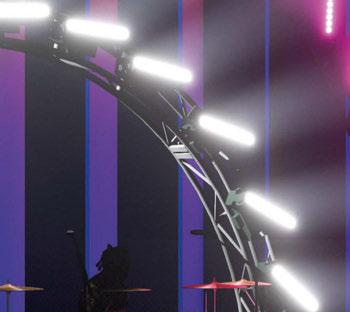




to change to batteries from diesel generators.
“There was an element of explaining that batteries were not new technology, but this is simply a new application for them to power a whole show. But when we explained the plans and demonstrated the telemetry, we had to oversee how much power was being drawn and how much needed to be refilled, the local provider was soon happy to do away with the need for backup generators.”
POW ER
The goal from the outset was to run the show with clean power, achieved through a combination of first and second life batteries. The main stage ran on Grid Faeries x Ecotricity
battery system. With the battery system already being used on the likes of Arcadia Dragonfly stage at Glastonbury and the Charlie Gillett stage at WOMAD, it had already proven itself as a solution for the outdoor festival market.
“T he goal of Grid Faeries is to take diesel out of events and get more sites onto the grid,” stated Claire O’Neill who is also the co-founder of Grid Faeries along with AGF. “We’re regularly burning millions of litres of diesel on the same sites every year at live events. So, why are we not connecting those to grid?”
For ACT 1.5, the production had initially hoped to use feeder pillars to provide gridconnected electricity to the site and change the batteries for the show. However, timelines made
AGF founder, Claire O’Neill, Tyndall Centre’s Carly McLachlan, ACT 1.5 Lead Producer, Mark Donne and Ecotricity’s Founder, Dale Vince presenting the findings of the Tyndall Centre report at GEI17
Why hire from IPS?
Trade Hire Specialist Extensive stock with 5000+ product lines
Quality Equipment Checked, tested & barcoded with multi stage processes
Checked, tested & barcoded with multi stage processes
Hire exactly what you need No inflexible kits
Spares included Helpful approach to accessories & spares
24/7 Delivery & Collection In house transport fleet with event experienced drivers
Multi-skilled team Friendly, technical staff ready to work alongside you
Independently owned Agile & principled UK company with a technical event focus
Follow the crowd here
The NEW Quantum326 Pulse incorporates all of the new design features introduced with the Quantum338, and of course uses three large-scale seventh generation FPGAs to continue the unrivaled Quantum legacy. The console merges tried and tested workflows with immense processing muscle, bold innovation and all of the Quantum features, giving you the ultimate tool set that is
RiderFriendly | Compact | Fiercely Competitive
• 156 Input Channels
• 72 Aux / Sub -Group Busses
• LR/LCR/LCRS/ 5.1 Master Buss
• 24 x 24 Full Processing Matrix
• upto 330 D ynamic Equalizers
• 48/96 kHz Sample Rate
• Theatre Specific Software
• Fourier Audio VST







the solution unrealistic so instead they opted to have the batteries arrive to the site charged and ‘topped up’ as needed by batteries that were taken on three electric Volta trucks working in a loop and changing at a renewable charging station. The cycle of charging the batteries in this way started five days out from the show and continued through to show day.
Where the batteries would be charged was also a major consideration as the production wanted to ensure that they were topped up with clean energy. The solution came when Ecotricity’s founder, Dale Vince suggested the use of his facility nearby which utilises wind and solar power. “It meant that we had one charging, one in transit and one going round the site at all times,” explained Chalabi.
Although most events usually only have one power provider, due to the logistics of this project, there were multiple players on hand to ensure the power demands were met.
“We had Power Logistics overseeing all the power usage along with Impression One, a local power company. Grid Faeries x Ecotricity main stage battery and Zenobe Energy did all the batteries around site,” stated Chalabi, listing all those involved in delivering power for the show. “KB Event, who did all the transport and logistics, getting the batteries to and from, and Volta Trucks’ electric vehicles transported the batteries to their destination and eradicate the use of diesel.”
KB Event’s Richard Burnett added: “We didn’t just reduce our diesel usage – we completely
swapped it out, using 100% renewable energy and hydrogen for transportation using fully electric Volta trucks and Scania gas trucks. We were stepping into the unknown, something that had never been done before and we didn’t even know if the technology would work. Jamal also asked me to look at Volta Trucks to see if we could secure two Zanobie Batteries to each rigid truck, in essence act as an electric tanker.”
Following a trip to Volta’s UK HQ, Burnett not only test drove the trucks but also weighed up the possibility. “The answer was yes,” he enthused. “However, many technical challenges were posed. The first to materialise was as soon as you put a battery on a battery powered truck you must have ADR [European Agreement concerning the International Carriage of Dangerous Goods by Road] trained drivers that know what to do in an emergency. The weight of the truck meant we could only have one battery on each truck leading to increasing the number of recharging rotations from Stroud into the Downs Festival site. The final challenge was the range of the Volta truck meant we also need to recharge them whilst we recharged the primary battery to power the festival. All possible but meant a close relationship between the transport team, the production management, the power team and the festival.”
Collectively, KB Event provided an ADR trained driving team, Euro 6 trucks powered with Hydrotreated Vegetable Oil (HVO) and a CNG truck to collect and deliver all of the primary batteries into site. The team also operated three
Volta trucks as battery tankers replenishing the festival site, as well as a Scania EV rigid that provided the same support. “It felt like business as usual, delivering a logistical solution for our client, but as the weekend unfolded it became clear just how groundbreaking this was,” commented Burnett. “I think that we have set the bar and delivered the standard, I truly hope now that with what we have collectively achieved that other festivals understand its possible and follow our lead.”
Chalabi moved on the conversation, highlighting the system of managing the power usage on site. “Power Logistics came in to manage those batteries and also do the telemetry across it which is key,” he said, outlining the importance of usage metrics.
“We created a map with what we called the ‘power bible’,” added Ward – who was involved in the creating the plan for the show. “We worked out how many generators we’d need and calculated how often they needed to be refilled. Too often at large events, just ‘to be sure’, we find people over specifying the diesel generators. Whereas here, the telemetry we had for all power usage was incredibly accurate.”
Much of the learning for the event included thinking about the wider usage of power and how the production might be able to find better solutions. “One example was the chiller trucks for drinks that for most events would be rolling up four days before and wanting to run,” mused Chalabi. “We allowed them on-site, but they weren’t allowed to turn on until 24 hours before



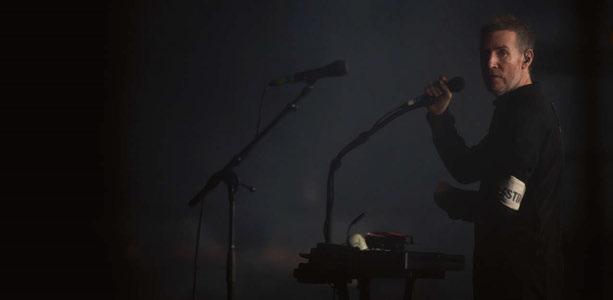

doors to get them down to temperature then they switched off at 6pm as by that point they were cold enough. That action made a massive power saving.”
Also onboard adding to the event’s power demands was portable power solution provider, Instagrid. “They were fantastic,” enthused Chalabi. “They came along with their little briefcase that we used for the first two or three days in the production offices, portacabins and at the accreditation office as well as for tool charging. They were great and meant we didn’t need to get generators on site running straight away because we had mobile power that we could deploy all over the place.”
In regard to power, Chalabi mused how the use of batteries had another unexpected benefit in that it improved the production value of the show – specifically, audio. “Massive Attack’s FOH Engineer, Robb Allen came up to me and said it was his first time at a festival where he was able to bring down the volume and not hear the all-too-familiar hum of diesel generators. The other thing about batteries, just like electric cars, is that it’s instant power – so it’s there whenever you need to pull it, as opposed to a generator, which takes time to kick-in.”
The movement of the production and artist along with the thousands of people due to attend was also a major consideration. As a band, Massive Attack had actively reduced the amount of equipment they take on tour, cutting it from a base line of four trucks to two with all
the trucks now using HVO fuel. No other act on the bill transported any equipment by truck, and all were asked to avoid travel by air and instead, travel by low carbon means.
There is no doubt that audience travel is one of the biggest CO2 impacts of live shows and arguably a harder topic to tackle. However, ACT 1.5 Bristol put several measures in place to lessen the effect, including presale of tickets to those in a Bristol postcode. Also showing a train ticket gave audience members special access to a restricted bar at the event, thereby encouraging travel via rail.
A fleet of electric buses were also transporting those from Bristol Temple Meads Station to the show. Lastly, ACT 1.5 worked with the local rail provider from the inception of the show sharing anonymous postcode data to allow the rail provider to forecast the level of demand. The show brought forward its end time to 10.15pm to make sure there was plenty of time to get to the station. The provider also brought in five extra trains to meet the demand.
In t he Tyndall Centre’s report, the team noted that there was positive feedback from the rail operators for having this level of communication with the event, stating: “They do not have any direct contact at all with event organisers and instead scan media to see where shows are happening and whether they might need extra trains or capacity.”
One of the key suppliers aiding the production with its transport needs was Crawfords Of London who provided a fleet of fully electric vehicles to support the event’s
logistics. “Whether it was moving crew, kit, or anything in between, Crawfords ensured that every journey made in Bristol was as clean and green as it gets,” commented Crawfords Of London’s, Patrick O’Sullivan. “By using electric vehicles, we helped cut emissions without compromising on service proving that sustainability and efficiency can go hand in hand. Our drivers were briefed, and they were thrilled to be part of something bigger than just the gig; this was about setting a new standard.”
O’Sullivan expressed how it was a “privilege” to work on an event he saw as a “milestone moment for the industry”. He elaborated: “We always say Crawfords is about more than transport, and this was a chance to show that in action. This felt like a wake-up call for the industry – proof that large-scale events can be run sustainably with the right collaboration and mindset. We hope this is just the beginning and Crawfords is all in for the ride towards a greener events future, and we’re proud to have played a part in helping ACT 1.5 make history.”
Another key action that ACT 1.5 leaned into was offering plant-based food for audience, crew and artists. AGF have reported that food can be up to a third of a festivals CO2 impact, and so the reduction of moving away from meat and dairy is huge. At ACT 1.5, when compared to the hypothetical event that would offer an array of vegetarian, white and red meat options, saw a 89% reduction in emissions.
In addition to data gathering AGF also provided event sustainability management, including the waste management planning and






compostable serveware operation. This meant that all serveware that was not reusable was able to be composted alongside organic waste. The waste per person per day was half of the non-camping festival average according to AGF benchmarks, and the recycling rate was 88% which is almost unheard of in a festival setting.
The ACT 1.5 production required the commitment to operating sustainably of every supplier brought on for the show, which included: Lite Alternative, Universal Pixels, Southby Productions, MM Band Services, KB Event and Crawfords Of London. Many of the suppliers already had a long-term relationship with the band and were more than familiar with their passion for performing sustainably.
“We’ve been supplying lighting for Massive Attack since 2015, and sustainability has always played a big part of their touring,” reflected Lite Alternative’s Andy Scott. For the ACT 1.5 performance, Lite Alt provided the band’s ‘festival’ touring pack, which includes a floor dolly-based system, back strobe wall and associated truss and rigging. “The obvious place to start is it all has to be LED, but this is the easy bit as all modern fixtures have gone this way now,” stated Scott, discussing the input the company had on the sustainability mission.
He commented how often when companies provide custom lighting dollies that they get discarded after the project. “However, a few years ago, Lite Alt designed and fabricated adjustable lighting carts, which can be
manipulated to cover a wide range of looks, negating the need for manufacturing and shipping. The same applied for the CHAUVET Professional Strike-M Strobe Wall behind the LED screen, where we utilised a framing system from a previous tour to minimise manufacturing.” There was also a conscious decision during the prep for reducing the weight of the equipment, to help with fuel consumption. This involved reducing the flight case count as much as possible, with cable looms hung in the floor carts, keeping the control package as minimal as possible. “ACT 1.5 proved it can be done,” said Scott. “I’m sure productions –certainly festivals – can use this event as the playbook going forward. For touring there’s more to be done on logistics of touring, crew and equipment travel and accommodation.”
The production brought in Universal Pixels to provide the upstage LED screen, cameras and video control package only after validating that it couldn’t be sourced more locally to the event and ensuring that it would be transported in the correct sized HVO-fuelled truck. “Having worked with Massive Attack for a long time and knowing many of the team involved in putting ACT 1.5 together, I knew it would be data driven and as far from green washing as possible,” stated Universal Pixels’ Phil Mercer. “It was great to play a part of putting into action many of the best practices that we’ve learned through our own ongoing sustainability journey.”
He continued: “It was good to prove what can be achieved if everybody involved has the same overall aims. There were no obvious
compromises from a production perspective. There’s no reason why this can’t become the norm. In fact, we did it all over again with Massive Attack in Liverpool for phase two of ACT 1.5 and I’m looking forward to the LIDO Festival show in London in June.”
Many of the suppliers working on the Bristol show specified equipment to aid in the overall sustainability mission. One example of this was audio supplier Southby Productions opting for energy-efficient amplifiers. The entire system was powered by d&b audiotechnik’s energyefficient D80 and D40 amplifiers, with DS10 audio network bridges seamlessly interfacing the d&b amplifiers with the Dante network. This setup enabled high sound pressure levels while maintaining low power consumption, delivering both powerful performance and energy efficiency.
“T his was the first major event running a large d&b system from a battery, instead of the conventional fossil fuel generator,” explained Southby System Technician, Dan Leaver. “This proved to be a great success, with no effect on power draw and still allowing the system to run without any issues.”
The system in question was a d&b GSL system with 20 SL-SUBs and V10P loudspeakers as front-fills. A KSL hang was used for the right delay hang, while XSL boxes formed the out-hangs, as well as the centre and left delay hangs.
“We minimised journeys, selecting audio crew who were close to the site,” continued Henry Cook, Senior Project Manager at Southby


Productions. “Some of which used public transport to arrive and depart. We feel very proud to have helped to reach such a significant milestone and made such a daring vision a reality. I hope to see similar events in the future as it’s totally possible and we’ve helped to prove that. If everyone made more environmentally conscious decisions, the world could and would be in a different place.”
The entire ACT 1.5 project was never meant to be a one-off show and as such later in 2024, the team revealed the second chapter that saw Massive Attack, along with IDLES and Nile Rodgers & CHIC take over the M&S Bank Areana in Liverpool. “UN Accelerator City in Liverpool, rather than being one off show, we got to move beyond live music, and it involved a lot of different actors,” stated McLachlan, excited that the Tyndall Centre would be involved in yet more projects with the ACT 1.5 team.
With the report now available, the team expressed what they hoped would be the wider impact of the project.
“Now we’ve got this report, we’ve gone as far as we can within our own entertainment sector and found the edges where we need the support from other sectors – whether that’s transport networks, our food systems, energy systems and the government,” affirmed O’Neill. “We want to use the findings so we can start having those conversations; be it with designers, local authorities or other sectors.” She closed by saying that the ACT 1.5 team had already had
some success on some of these fronts, with Mark Donne from the ACT 1.5 team looking to continue to push the conversation in multiple areas and sectors.
“In the context of a climate emergency, I don’t personally see commercial, marquee events as inherently valuable; but they are made valuable by human endeavour, creativity and ingenuity with a desire to work together,” mused Donne, reflecting that events should be doing more in pushing the envelope of becoming more sustainable. “Recent research suggests that 89% of the population want to see more action on climate change. Therefore, building an event with so much pollution for this same population does not make sense. We must make these events valuable.”
Donne is optimistic about the wider response that the ACT 1.5 movement has received noting that in 2025, Billie Eilish’s production for the European tour will be collaborating with ACT 1.5 and the C40 City Mayors to aid in measures to lessen the production’s impact on the environment. He revealed that ACT 1.5 have found their parallel organisation in the film world - The Green Rider – led by David Attenborough’s grandson, Will Attenborough.
“In my opinion, it makes sense to collaborate with those working in film and TV as we are all using the same transport links and power utilities and having more voices leading change.”
He also alluded that any real change would always hinge on artists and A-Listers leading the charge. “The power of the artists to lead is critical!” Donne asserted. “We as producers or
those working in production have no leverage until the headline artist says they will not do the show unless certain measures are taken – but that is happening more and more.”
Nevertheless, Donne and the rest of the team were pleased with the ripples created both with the projects and the subsequent reports as well as the impact the Phase 2 in Liverpool had on moving the sustainability conversation forward. And this summer we’ll get to see more events that push this envelope – specifically LIDO Festival where Massive Attack will be headlining one of the nights, with AEG revealing that the festival will be running on the batteries when the band hits the stage. This is a clear indicator of the impact ACT 1.5 had and a validation that this alternative is not only more sustainable for the environment, but an alternative to bring live entertainment to the masses and safeguarding the longevity of the industry. www.massiveattack.co.uk www.agreenerfuture.com www.tyndall.ac.uk www.backlashproductions.com www.properproductions.org www.gridfaeries.live www.ecotricity.co.uk www.powerlog.co.uk www.zenobe.com www.instagrid.co/gb www.lite-alternative.com www.universalpixels.com www.southby-productions.co.uk www.mmbandservices.co.uk www.crawfords.co.uk


The loudspeaker manufacturer launches Projection – the first audio system design software to offer wave-based simulation for low-frequency loudspeakers. TPi finds out more…

Words: Stew Hume
Photos: Funktion-One
There is no doubt that audio prediction software plays a key role in the modern show, with system designers working side by side with FOH engineers on the design of a sound system, performing all the required calculations before even setting foot in a venue, with the goal of ensuring the best experience for the audience and managing off-site noise issues and multi-stage interference at festivals.
Officially launched at ISE, Funktion-One’s Projection 1.0 system design software uniquely provides fast wave-based simulation for low-frequencies for greater accuracy w hen predicting bass array performance.
“ The origin of Projection goes back to the launch of Vero,” reflected Funktion-One Research & Development Engineer, James Hipperson, discussing t he starting point for the new software. “One of t he initial design
goals was to make t he interface as simple and user-friendly as possible. It’s very easy to keep adding tools and end up w ith a cluttered interface. T his c an give an impression of technicality and precision, but w hat really matters is t he accuracy and realism of t he underlying acoustic c alculations and how easy it is to work w ith t hem”.
W hen it c ame to implementing bass array prediction, it was crucial to utilise FunktionOne’s extensive experience w ith large scale bass deployments. Funktion-One founder
Tony A ndrews has never been impressed w ith broadside arrays, due to t heir lack of phase coherence, vertical directivity control and subjective impact. T his led to continuous ex perimentation w ith large, contiguous blocks of bass loudspeakers.
Andrews commented: We were building bass arrays as t all as possible to contain t he
low f requencies in t he vertical plane and, furthermore, co-locating all t he enclosures to maximise t he overall directivity control and eliminate t he destructive interference from multiple sources. T his g ave r ise to our asymmetric bass deployments.”
Pushing t he boundaries of bass array deployment resulted in a need to also push the boundaries of acoustic prediction. T he st andard method of modelling bass arrays is the complex directivity point source model, but t here is an issue w ith t his approach. “ With large, contiguous bass arrays, we were finding that directivity and c ardioid processing varied significantly w ith arrays of different sizes and orientations, w hich were not correctly predicted by t he point source model,”
Hipperson ex plained
“If Funktion-One’s software was to present a low f requency prediction, we would have

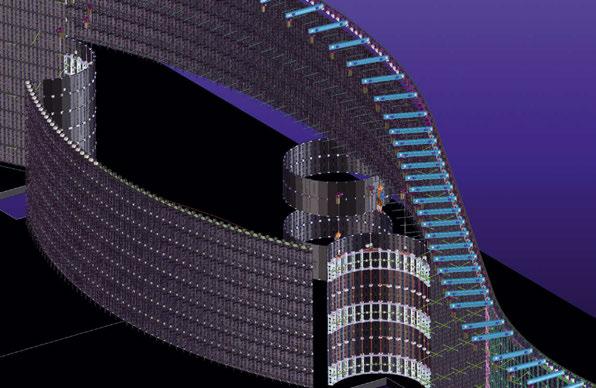

TWENTY
Belgium: +32 495 224243 | China: +86 152 2019 7848 |
www.twentythree.be | info@twentythree.be


www.novastar.tech
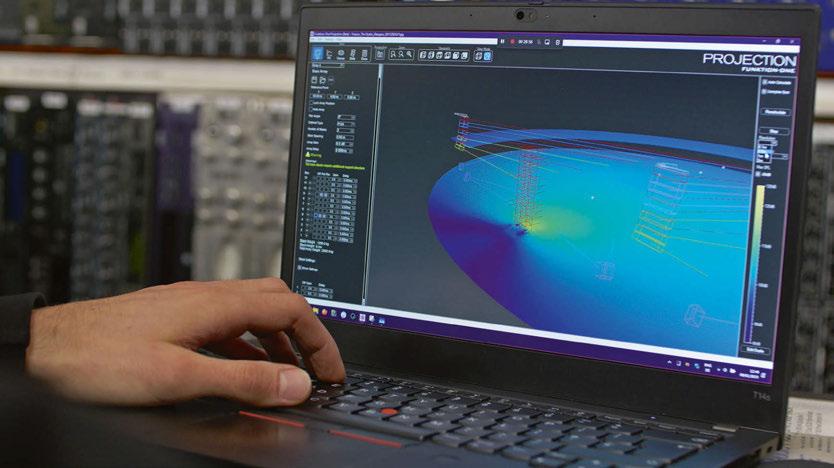
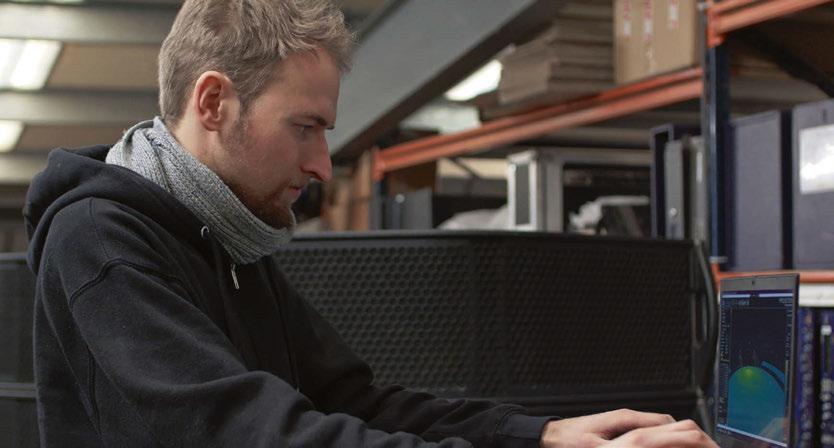
to do it correctly,” added Andrews. “That’s what drove the next chapter of Projection’s development. We agreed that a point source model was the wrong approach and that we wouldn’t officially release Projection until we had developed a more accurate bass model that truthfully reflected the physical reality of sound waves and enclosures.” Hipperson further explained that while a point source model captures the basic interactions between sources, by design it does not model wave effects such as reflection, diffraction and occlusion. This means that a point source method would not show how sound waves would be affected by the physical size and presence of large bass arrays. “The reason why point source models are more commonly used is because it’s very difficult to simulate waves at all,” Hipperson commented. “It’s only recently become possible to simulate the full frequency range for even a small room and normally it would take several hours.”
Unusually for a software project of this complexity, Projection’s wave-based low frequency model was developed by just two people – Hipperson and his brother –Tom – who was brought in for his software engineering skills.
“Typically, you’d have a big team working on a project like this, but in this case it was just two guys,” commented Funktion-One’s Director of Marketing, Michael Nicholson, praising the work of the two brothers.
The next challenge was finding a way to bring the calculation time down. After many months, the two brothers created a method that combines some pre-calculated data with on-demand calculations to predict low frequency wave behaviour for any configuration or deployment - in seconds. This novel approach is patent pending. As Hipperson explained, the computation time for a wave-based model across the full frequency range is simply not practical.
Therefore, Projection adopts a ‘dualmodel’ approach. “Below 160Hz, it utilises a wave-based model, then above that it uses a point source model,” said Hipperson.
With Funktion-One officially launching v1.0 at the start of the year, Hipperson was quick to comment that there are still many more features to add to the software.
“It doesn’t stop here,” he enthused. “The goal was to get it feature complete by ISE where it does everything people would expect it to do. Now we can carry on adding more functionality.”
Speaking of the wider implications of the software release, Nicholson discussed the message that Projection v1.0 sends to the market. “We now have a product that can accurately predict low frequency behaviour, saving time and ultimately making an event more enjoyable for all involved.” Projection v1.0 can be downloaded from Funktion-One’s portal accessible via its website. www.funktion-one.com

Tino Reschke Sound Engineer and Project Manager at Audio Plus testing the new Projection 1.0 software. Funktion-One Research and Development Engineer, James Hipperson.


With the 2025 festival season almost upon us, Live Nation’s Andy Copping shares the importance of production value in maintaining the livelihood of a festival…

Words: Alicia Pollitt
Photo: David Stewart
Having diversified its line-up in recent years, Download Festival is not only growing in a programming sense – adding more hard rock bands to its roster – but the event has also bolstered its production value.
“E xpectations from festival audiences is at an all-time high,” Live Nation’s Andy Copping told TPi. “It is super important to offer a ‘wow’ factor at festivals now, as well as the lineups fans are eager to see something creative on the production side too – it is just as important.”
Reflecting on the 2024 edition, Copping mentioned Dan Braun’s production design.
“Having seen what Dan has created over time has always been inspirational,” he noted. “What he put together for Metallica was and still is, groundbreaking. The Download team took inspiration from that and incorporated it within what we wanted to do for the festival, and it really worked.”
To achieve the above and beyond production value that is expected from punters at the festival, the Download team gather before the current year’s festival has even taken place – meeting well over 12 months in advance. “Andy Grey and the Far and Beyond
(FAB) team are family at Download now and they know what is needed and always deliver,” Copping stated. “We are able to bounce ideas around the team and then everything slowly starts falling into place.”
Copping’s praise also extended to the staging provider for the festival: “Serious Stages are great. They have a long-standing relationship with Download – this collaboration is perfect for us.”
Looking to the future, Copping ensures that audiences will be in for lots more surprises for the festivals 2025 edition. “We will see lots of surprises and a lot of new ideas this year, particularly in District X, which is a big part of our campsite and after-hours entertainment,” Copping added. “Download is always striving to be a market leader and understands just standing still will not achieve that. It is always thinking about how ig can improve and better each year, and thankfully, after over 20 years, it is still here and admired globally.”
www.downloadfestival.co.uk
www.livenation.co.uk
www.wearefab.com
www.stages.co.uk
The Dan Braun-inspired tower screens at Download 2024.

“The delivery of the Download video towers by Serious Stages could only be described as text-book. Using Dan Braun’s design for Metallica’s 2023 Download show, and thanks to production designer Dan Braun, we developed a copy of his concept with Serious. Then from a standing start to full show-ready, delivery was achieved within six weeks, without any hitches whatsoever. The structures were delivered on time and budget and exceeded expectations in what was a very challenging project”

With the German-based manufacturer turning 50 this year, TPi sits down with CEO Alexander Pietschmann to get his reflections on the milestone while learning what the future holds for the company.

Words: Stew Hume
Photos: Julian Huke and Adam Hall Group
As someone who has visited many offices through my time at TPi, it must be said there is something special about Adam Hall Group’s German HQ. Based in Neu-Anspach – a short drive from Frankfurt – the company’s campus houses all the brands under the Adam Hall Group umbrella and is set up to be not just a hub for the group but a place to inspire. From the opening foyer, which features several pieces of memorabilia including guitars played by some of the world’s biggest rock ’n’ roll stars, it acts as a reminder of both the
foundations of the company, while the grand scale of the building illustrates how far the company has come over five decades.
“We started as a flight c ase company in the UK,” chuckled Adam Hall G roup’s CEO Alexander Pietschmann. “One of our major achievements has been our ability to adapt, grow and reinvent ourselves, but our brand portfolio is something we are proud of.”
T he brands currently under t he Adam Hall Group banner include LD Systems, Cameo, Gravity, Defender and Palmer, not forgetting
Ad am Hall Hardware, Stage Equipment and Cables. W hile all operate under t he s ame umbrella, each brand has its own identity. “ That is very important to us,” emphasised Pietschmann. It’s important for a brand to have differentiation so it c an build t rust w ith customers and create a unique identity.” Despite all t he brands working independently in t heir own markets, t he CEO ex plained t hat having all t hese brands f rom different markets working under one roof was very useful – specifically w hen it comes


to the sharing of knowledge between R&D departments. “We have a very integrated approach within our R&D departments, which enables us as a group to solve problems quicker. For example, we could have a mechanical engineer that usually works on flight cases helping the Cameo team with creating a mechanical housing. Innovations are not always in the obvious places.”
This thought process has led to Adam Hall Group investing in more “interdepartmental spaces” according to Pietschmann, who discussed some of the innovations that have taken place at the company’s German base recently, as well as its hubs in the UK, Barcelona and New Jersey.
“Today we are acting in over 100 countries around the world with a 60% export rate out of Germany,” he stated.
Like the German HQ, all the other Adam Hall Group offices are dubbed as ‘Experience Centres’. Pietschmann elaborated: “We want to push innovation, creativity and collaboration internally and with our clients.”
TPi was keen to move the conversation on to Adam Hall Group’s lighting efforts with its Cameo brand. Founded in 2012, the brand has come a long way, offering a full array of highend moving head fixtures.
“Cameo is a great example where we’ve built up a brand and trust within a sector,” stated the CEO. “We started small and now you can find our fixtures on some of the biggest shows such

as Tomorrowland.” He pointed to one of the brand’s latest releases, the ORON – the brand’s hybrid phosphor-laser, moving head – as a demonstration of the innovation taking place adhering to market demand.
“Moving heads have a complex product development cycle where you must consider mechanical elements, software, hardware, and nowadays, you also must consider waterproofing. You don’t have the same timescale to develop as you do with an audio product. It’s not easy from a sales and marketing standpoint, but if you develop good workhorses and products that are not just a one trick pony, you can make an impact.”
He explained that much of the developments at Cameo had come from listening to the market demand and the creation of the community of end users –dubbed ‘Lumen Beings’.
Pietschmann cited Cameo as an example of how the group creates solutions that are up to the task of working in the live events space – specifically the need for products that can withstand ever more extreme conditions for outdoor events, stating the “goal is to create products that can withstand or be easily repaired,” he remarked.
With it being the 50-year anniversary, it would be easy for the Adam Hall Group team to sit back and revel in nostalgia, but Pietschmann maintained that it is important to look forward rather than back. “It’s right to celebrate our

heritage but we like to live in the future rather than the past. We’d rather use the celebration as a launch pad to our next chapter and our continued goal to be one of the leading German manufacturers by 2030.”
He continued to hypothesise how modern technology is going to help progress the overall group. “All companies moving forward need to lean into data analysis to make informed decisions when it comes to production development,” he stated, adding how AI especially will help drive this progress.
“On the product side, smart connectivity is an interesting development,” he said, further explaining how having a remote connection

with solutions could ensure the ease of software updates and provide products a longer shelf life. In addition, Pietschmann highlighted that this posed an interesting debate around customers – specifically in Germany – not wishing to share information with manufacturers once purchased. Among the future of the group’s products, the CEO had an interesting take on the importance of the work that the Adam Hall Group is trying to achieve. “I believe in the live sector. You see so many articles about loneliness nowadays and the antidote is real human connection.”
Li ve events, according to the CEO, offer a solution and he sees the Adam Hall Group’s
overall mission to provide the tools to facilitate these gathering. “What we are doing in our industry, and what our customers are doing, is creating magic,” he added, proud of the part that his company plays in this process.
It ’s great to hear from a company –specifically one that works in a wide range of markets – where those at the top are aware of their place within the events space and that they are creating tools to enhance the experience of those in a crowd seeing their favourite band or artist. This is no doubt why even after five decades, the Adam Hall Group continues to grow and break new ground. www.adamhall.com
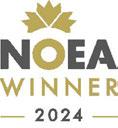






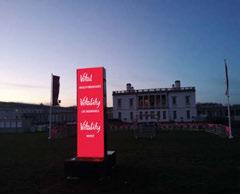




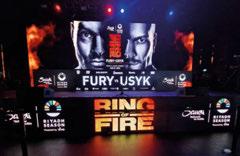



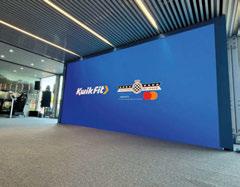





The Event Safety Shop Co-Directors, Simon James and Tim Roberts highlight the changing nature of health and safety within the live events sector.

Having worked for multiple years in the live events sector, Simon James and Tim Roberts joined forces with Dick Tee and Mike Richmond to form The Event Safety Shop (TESS), offering support for concerts, tours, technical providers and festival organisers as a ‘Creative Safety’ partner. With some of its first clients in the early 2000s being big names such as The Rolling Stones, the company was quickly elevated to the international events scene. Its list of clients now reads like a who’s who of headliners, having provided their services for the crew of AC/DC, Genesis, Green Day, KISS, Queen + Adam Lambert, Madonna, Roger Waters, Harry Styles, Shakira, U2, among others. The company regularly consults with Glastonbury, Leeds & Reading Festivals along with some major brands, including Red Bull.
In the early days of TESS, it was a bootstrap operation with James and Roberts being the primary members of the company out working on these high-profile acts.
“In the beginning we decided who would work on a particular job came down to who picked up the phone first,” laughed James, reminiscing on the early years of the company.
The Creative Safety brand has certainly expanded since then, with bases now in Bristol, UK, Austin, Texas and Hong Kong as well as working on multiple projects in the Middle East.
“T hese days Tim tends to work on the large projects which sees him often spending a great deal of time in areas such Somerset, Saudi or Las Vegas, whereas I tend to manage the day to day running of the business back in the UK,” explained James, emphasising how the two of them still both held the title of MD
The Event Safety Shop celebrate 25 successful years of business


with all decisions “made jointly.” As the MDs looked back at the two and a half decades of business, they were both keen to highlight some individuals that were incredibly helpful in the initial stages of the company.
“We have to name-check Jake Berry and Wob Roberts who brought us on for some of their biggest shows,” reflected James. “Chris Kansy and Tony Gittins were two others who have really aided in the overall consideration of safety in the industry.”
Roberts added: “I’ve got to include Jim Digby on this list. We still work closely with him on Linkin Park and other projects – and Jim has been a major instigator and collaborator with his ground-breaking work on the Events Safety Alliance (ESA). As well as individuals we also had the privilege over time to work with suppliers like TAIT who have really set the benchmark in planning and delivery of exceptional hardware. Huge thanks are also due to Michael and Emily Eavis at Glastonbury for showing faith in us for so long, and to Melvin Benn at Festival Republic.”
Along with providing safety advice for tours and festivals through the years, both MDs have also aided in the creation of safety guides that are still held in high regard by the industry. Roberts was very involved in the HSE when they still published the document which became the Purple Guide. The purple-covered HSG195 provided reliable guidance for event organisers, suppliers, and local authorities alike. Meanwhile, James was involved in the PSA Safety Passport while also sitting on the Institute of Structural Engineers, who often examine cases where something goes wrong at events.”
Having had their finger on the pulse of event safety for two and a half decades, TPi was keen to hear some of the changes they have witnessed first-hand in the work they consult on. “When it comes to live events and touring, risks and hazards have not changed; gravity is
still gravity and electricity still hurts,” laid out Roberts, bluntly. “The fundamentals of physics and harm have not changed, but what has is the way we tackle them and the expectations of venues, promoter, vendors and the public.”
James added: “The technology and the size of tours has certainly expanded during our time in the business. I look back to one of my first shows in the ’80s – Tina Turner – and that was her biggest tour ever at the time with five trucks. There are now some shows that tour that size on an academy level. Compare that to the Sabrina Carpenter show we just worked on, which was 20 trucks.”
While the size of the shows has increased so, according to James, has the professionalism. “Crews want to go home sane and in one piece after a tour; it’s no longer just a case of partying around the world. You can see the professionalism in all the tours and events that we’re involved in.”
The two also explained how the scope of what is covered when it comes to safety has expanded with more productions considering crew welfare and mental health. “There has been a substantial recognition of human frailties that affect us,” stated Roberts. “It’s not all just about accident prevention, but the notion of well-being. There has also been a real change in access and equality, for example making sure women are welcomed and respected and not subjected to sexual aggression.” Needless to say, the ‘safety’ elements of TESS’ consulting with tours has gone far beyond hard hats and harnesses for those working on site.
A point that the two also impressed was the confluence of live events experience and the more academic knowledge of health and safety regulation. “There has to be a real combination for the knowledge of how a show works and comes together as well as the law behind good risk-management practice,” mused Roberts. “The law is clear when it comes to what is
required is for people to be ‘competent’ in the work they are undertaking – from driving a forklift to being a safety advisor of a large-scale event.” And according to the MDs this meant needing a good grounding of knowledge in the inner workings of live shows. “That’s not to say that someone working in safety has to have unloaded 500 trucks over the years, but they must have a practical understanding of safety measures and mitigations.”
Although TESS themselves do not award any certifications they do put on several training activities and in fact, to mark its anniversary year, the company has even launched a new campaign to try and expose youngsters to the live event space. Under the moniker of 25 in ‘25, TESS are looking to bring 25 individuals who are interested in working in the live events sector and showcase the full extent of opportunities in the industry.
“T he idea came after we spoke to Hannah Eakins from Production Futures,” stated James. “We don’t want to give these 25 individuals a dry health and safety talk, but more an ‘Inspiration Day’ to showcase some of the amazing career opportunities the live event sector has to offer – many of which aren’t immediately obvious if you simply attend a festival or show.
“You don’t see all the production, logistics, design, catering, artist-liaison or safety management options when you’re starting in the industry. Not everyone is going to be a FOH Engineer, but there are so many other ways to make your life in live events.”
The event is going to be hosted at the company’s base in Bristol in October this year. “The goal of the project is not to take on the top applicants at TESS,” stated Roberts. “I would be happier if in 10 years, I bumped into someone backstage who came to our 25 in ‘25 event and was inspired to find a career path through our glorious crazy business.” www.eventsafetyshop.co.uk
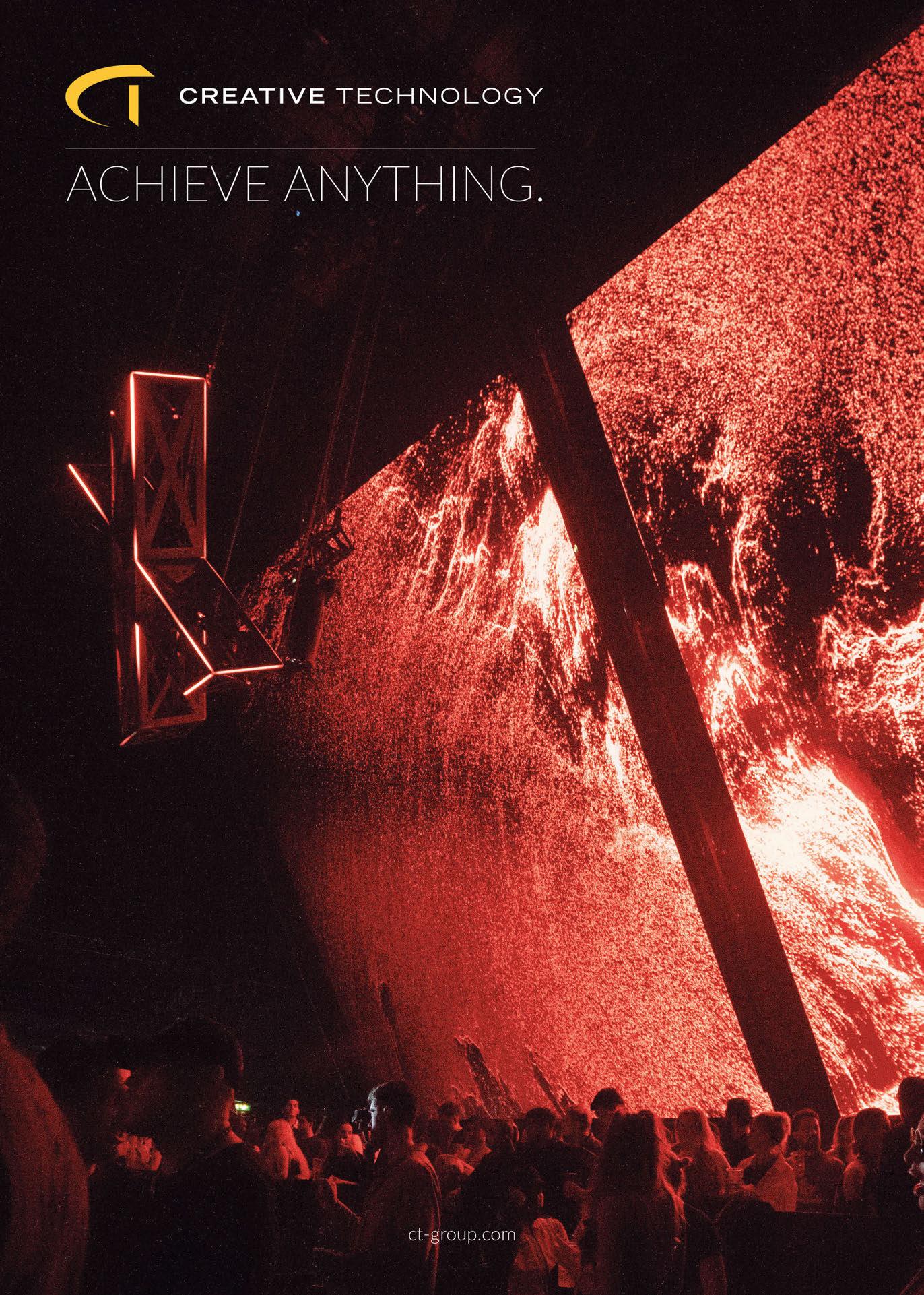

Fresh from being named the industry’s Favourite Lighting Rental Company at the TPi Awards 2025, Colour Sound Experiment Managing Director Haydn Cruickshank reflects on the company’s remarkable 35-year journey – one defined by innovation, resilience, and a steadfast commitment to independence.

Words: Jacob Waite
Photos: Luke Dyson and Colour Sound Experiment
“It was such a surprise be recognised by our peers and colleagues at the TPi Awards,” Cruickshank stated proudly, speaking to TPi shortly after the ceremony. “We’ve put a huge effort into stepping up how we deliver shows over the past few years, so it feels good to know it’s been noticed.”
As a proudly independent lighting and video rental outfit, Colour Sound Experiment thrives by staying true to its ethos. With no outside investors to answer to, the team remains focussed on the craft of live production and people. Cruickshank elaborated: “Our uniqueness is being able to offer technical production solutions in three continents, safe in the knowledge that we can’t be given targets, sold, merged or restructured. We’ve never been scared to innovate and invest; this ethos is very much at the heart of Colour Sound.”
The journey from a fledgling rental house to a major name on the global stage has been marked by pivotal decisions and bold
investments. One of the earliest watershed moments came in 1990, with the company’s first move into intelligent lighting. This was followed by the addition of LED screens in 2009. The past five years, however, have seen Colour Sound Experiment take significant strides internationally, with the development of specialised departments helping to deliver consistency and quality across borders.
“T his has really helped us be consistent across different regions. Having a dedicated software and networking department, although only three people, has been revolutionary for supporting other departments such as automation,” Cruickshank explained.
The company employs 130 full-time staff members – a testament to steady, sustainable growth over three-and-a-half decades, even in the face of global challenges.
“Our international expansion has given people a perception of much more rapid growth. I’ve always been conscious of where
any bottlenecks are in the business that could hamper growth and tackling them, so I assume it will always keep growing,” Cruickshank said.
Reflecting on recent highlights, Cruickshank pointed to a series of standout moments over the past 12 months. Among them was the technical delivery of The Chevron Stage’s floating LED nets at Reading & Leeds Festivals – a bespoke engineering feat inspired by a desire to create an intimate and immersive rave environment in an open-air setting. “This project was particularly fitting as it harks back to the raves and early dance festivals where we cut our teeth,” Cruickshank remarked.
Equally significant was the company’s contribution to Soundstorm 2024 in Riyadh, Saudi Arabia – a mammoth technical production and one of Colour Sound’s largest international undertakings to date. Now in its fourth year at the festival, Colour Sound Experiment supplied four of the seven stages, delivering a vast amount of equipment to meet




the ambitions of a project designed to drive cultural progress in the region.
Touring remains a major component of the business, with recent work on The Script’s latest tour showcasing the breadth of Colour Sound’s inventory. The production featured extensive use of LED – across screens, walls, floor, and ceiling – with automation adding further complexity. Alongside truckloads of lighting for both A- and B-stages, the setup came with high logistical demands.
“Despite our concerns it could even be built before doors, it was in and up, safely, by 1pm every day,” Cruickshank noted. He also cited Jean Michel Jarre’s shows in Bratislava as another recent highlight, describing them as both “technically challenging” and “hugely rewarding” projects.
Looking ahead, the Colour Sound team remains optimistic about what’s to come –though not without an awareness of current market pressures. “We’re very optimistic about
2025,”Cruickshank explained. “However, on the supply side the current tariff and trade war certainly presents a challenge for all rental companies and most manufacturers. That said, we view this as short term and relatively simple to mitigate.”
“On our demand side, although where and how ticket revenue is spent continues to evolve – sometimes giving the impression of decline –the overall dollar spend is still growing. People have been gathering to listen to music together for about 40,000 years; it isn’t going out of fashion any time soon.”
The company’s international footprint has grown significantly in recent years. Its Los Angeles branch, opened three years ago after 25 years of groundwork, allowed Colour Sound to better support its touring clients across major US markets.
“We’ve been able to service our touring clients in their major markets and deliver consistency across them. Recently adding
Favourite Lighting Company, Colour Sound Experiment at TPi Awards 2025; lighting the way for Disclosure; Sugababes hit the road with CSE support and the team at Soundstorm in 2024.
the New Jersey branch has further enhanced that allowing us to better support tours across the country and service the one-off shows in the biggest cities,” Cruickshank reported. “Positioning ourselves in LA and near New York, as we have in London and Jeddah, puts us close to where the big, one-off shows happen.” Short-term goals include fully staffing the New Jersey warehouse and building an integrated team there. Medium- and long-term ambitions centre around thoughtful growth and continued independence – “finding the right people, nurturing talent, and expanding without compromising” their core values, according to Cruickshank. He concluded: “2025 is looking good. We’re predicting growth in all regions, but particularly in the US and KSA. The new location in New Jersey was primarily to better support the touring shows but has opened some new opportunities on the East Coast. We have some huge new projects in KSA including a 5,000 sq m screen install in partnership with Samsung. Importantly, our corporate and touring markets continue to grow.” www.coloursound.com


























With IPS closing in on 25 years of business, TPi visits the company’s new Milton Keynes base to discover what’s in store for the new six-and-a-half-acre site…

Words: Alicia Pollitt
Photos: IPS
IPS (Impact Production Services) recently invited TPi to Milton Keynes to look around its new state-of-the-art, purpose-built warehouse and site, the latter of which spans six-and-a-half acres. With the company completing the move over the Easter period, the new facility signals new life for IPS, bolstering its operations further and doubling its capacity.
“Next year will be 25 years of IPS, so it feels like the right time to double the size of our site,” Tom Warden, H&S and Marketing Manager at IPS began. “We moved into our previous site in 2013, which was also doubling our capacity at the time. It is brilliant to grow so rapidly.”
Located a mile from the previous site, the new facility stands as proof of the growth the company has experienced coming up on its quarter of a century anniversary.
“We have every confidence t hat t he move is going to be worthwhile,” Warden stated, discussing the company’s growth despite often challenging market conditions. “It feels like a vast space at the moment, but we are looking forward to having the space to better serve our projects and clients.”
The new space features 10 loading docks, with three dock levellers to streamline processes, as well as 140kW solar array, a rainwater harvesting system to be used for vehicle and wash bays, EV charging points, a full motion-controlled LED lighting setup and upgraded insulation to improve energy efficiency – all of t his to contribute to t he company’s commitment to lowering its environmental impact. “It was important to

us to make environmental changes that we couldn’t do at our previous site,” Warden said. “Being greener is now increasingly part of every arrangement and we want to be able to provide customers with an environmental impact analysis when using us.”
The company has also just been awarded an A EPC rating, which it discovered the day TPi visited. “It’s amazing,” Warden said, noting the hard work that went into achieving the rating. “We worked hard to get it; we didn’t expect to get such a high rating, but we were quietly hoping for it.”
Discussing some of the challenges IPS went through before adding additional space, Warden revealed that the company had to turn down work. “Last summer, we had a horrible situation in which our space was so maximised we weren’t able to get some of our kit out, despite having more than enough of it,” Warden explained. “Moving into the new site means that we won’t have to turn down work and we will be able to maximise the use of our equipment.”
With the move facilitating the company to take on a larger workload, IPS has put a focus on centralising warehouse and technical teams to encourage collaboration between departments. “We’re moving everything together into one big collaborative space, which we’re really excited about,” Warden commented. “We’ve added more meeting rooms, and more spaces for people to huddle and work together to completely change the way we’re currently working. Because we offer various disciplines, we want projects that utilise multiple departments to be able to find a



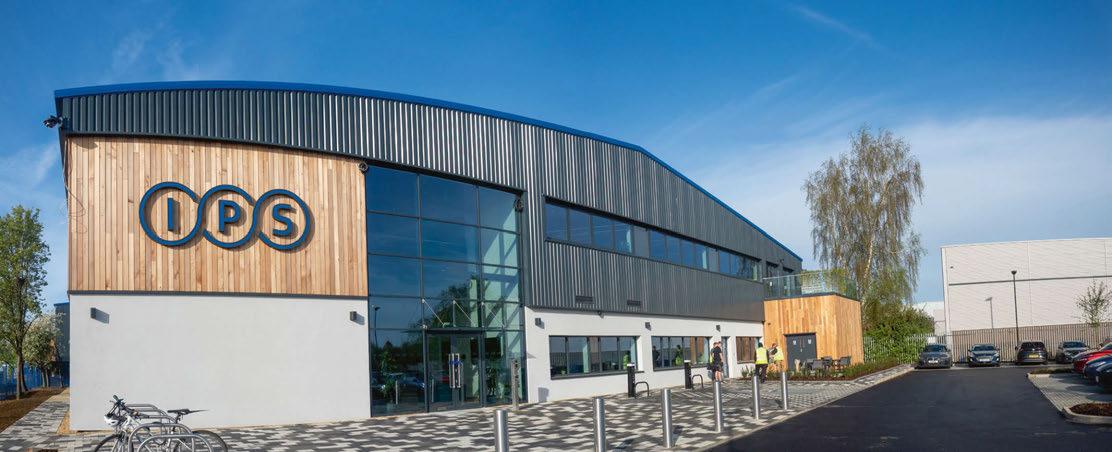
space together, making our performance more efficient,” he added. With the facility crafted from the ground up, IPS has put all of its effort into ensuring that the site has longevity for years to come. IPS founder, James Mason, commented: “Our new warehouse is so much more than just additional space. It’s a hub that has been carefully designed, based on our learnings, to foster innovation by bringing our teams closer together, enhancing collaboration and efficiency. It allows us to provide an even better service to our clients and support our team for many years to come.”
Looking after staff and client interests when considering the move, Mason explained
that being close to the previous site ensures that IPS can maintain its proximity to London and utilise transport links while offering better public transport connections and increased parking bays.
“It’s remarkable to think that our first site would now fit entirely into our current lighting department, which truly highlights the transformative steps forward we’ve taken and continue to take,” he added.
Looking forward to the next year at IPS, Warden expects the work the company can facilitate over the summer to increase. “Our order books are already bulging for the year ahead, which is exciting,” Warden reported.

“We want to be the go-to company for whatever people may need, while also being a specialist operation that isn’t a huge conglomerate.”
Mason concluded by anticipating the company’s approaching 25th anniversary: “As we approach our milestone anniversary in 2026, this expansion marks a significant step in our journey to continually improve service delivery and drive innovation within the events industry. With enhanced facilities, greater operational efficiencies, and our customer-first approach, we are excited to support even more ambitious projects and further strengthen our role as a trusted partner to our clients.”
www.ips.co.uk



A three-week course providing applicants with the chance to learn the basics of backstage, discover how real-world live events and theatre technicians work, and learn the ‘need-to-knows’ of finding work in technical production.

Technical Academy, run by the Southbank Centre in collaboration with ABTT, The Albany, ATG Entertainment, Factory International, Live Wire Productions, National Theatre, Roundhouse, Royal Albert Hall, RNSS, and The Production House, offers a unique, no-cost opportunity for aspiring live event technicians to gain hands-on experience. Its mission is to remove social, cultural and financial barriers and open doors to backstage careers in live events and theatre, as TPi discovers.
“T here is a looming skills crisis in the sector,” said Southbank Centre’s Amber Lee, Project Manager for Technical Academy. “This is in some part due to COVID-19 and people leaving to retrain elsewhere and partly because skilled people have left the country since Brexit. We’re also seeing a new generation emerge with different expectations from employment and work/life balance and school curriculums which don’t promote off-stage technical careers. This industry is not ethnically diverse and is disproportionately male. We want to find ways of bringing new people into technical production, who perhaps didn’t know that this industry existed, make them feel welcome and show them what’s possible.”
The course actively encourages people from under-represented backgrounds to gain valuable backstage skills, including building stages, rigging lights, setting up instruments, and designing sound, lighting, and technical equipment. It provides direct experience in London’s most iconic venues, where

participants meet professionals, observe workflows, and build networks. “We ran a pilot in March last year, and a second programme this January – working with partners to design the curriculum, so it is ‘by the industry, for the industry’. We think it’s important to show a range of venues, disciplines, and technicians, and hear about individuals’ career stories and backgrounds. This is none more prevalent than on the course’s ‘Careers Day’, this January, which featured 28 organisations meeting participants in a speed-dating-style event.”
As part of the curriculum, sessions include manual handling, equipment setup, and operating lighting and sound desks, as well as working with microphones, backline equipment, and projection screens. To ensure accessibility, the Southbank Centre offers a bursary to all participants, provides lunch, covers travel within London zones one to six, and supplies all necessary tools and PPE — including boots, gloves, hard hat and hi-vis gear for participants to keep.
Technical Academy was born out of a collaborative research piece by 14 organisations addressing recruitment, skills, and diversity issues in the sector. “The overwhelming consensus was that these areas were in urgent need of support,” Lee identified.
Ad am King of The Production House, a longterm Southbank Centre collaborator, shared: “We’re proud of our connection with Southbank Centre. Graham Moir of Live Wire Productions [formerly Head of Technical Production at Southbank Centre] approached me a couple of years ago to discuss the talent pipeline crisis post-pandemic. From there, we joined a consortium to address these challenges.”
King leads modules on stagecraft and backline, part of a curriculum taught by technicians and guest tutors to give handson training in everything from PAT-testing to loading and unloading trucks. “It’s hands-on as opposed to death by PowerPoint,” he remarked.
Around a quarter of Technical Academy participants so far have identified as neurodiverse. Feedback describes the course as “a chance to try out many different roles” and “filled with so much kindness, knowledge and genuine support”, making it accessible to people from all backgrounds. “We work in arts organisations which are frenetic, so there is no good time to implement this programme,” Lee admitted. “All our partners give a lot to make it viable. And to make it 100% accessible, we offer every participant a bursary equivalent to the London Living Wage.”
The results speak for themselves. “Sixtyfour percent of the pilot cohort from March 2024 took up paid work and experience, or further training in the industry within six months of completing Technical Academy,” stated Lee. “We continue supporting participants into opportunities long after the course has finished, so expect this figure to continue growing. We are dead set on providing paid work experience opportunities for participants. Once they’ve finished this course, it’s up to the


industry to put their money where their mouth is and give people opportunities. Because we know when people come into this industry with no experience, people expect you to work for free — and that closes the door on a lot of potential talent.”
Craig Tye of Roundhouse stressed the importance of simplifying entry into the field: “I was keen to get involved in Technical Academy because it’s geared to those who are unaware of or have no experience of this industry and technical. While that has been amazing, it’s also where a lot of the challenges lie. We’ve had to assess how we deliver workshops and training without relying on sector-specific jargon and niche workflow processes. As a sector, we
have lost the ability to train people in a working environment. When we change our mentality and embed this as part of our daily routine — training people on site — we will need initiatives like this less and less.”
Mig Burgess of ABTT echoed this with a call for holistic outreach: “The idea is retention and making applicants consider the industry. The sector needs to step up and take on these recruits and upskill or train them in-house, whether that’s encouraging ABTT’s Copper Award for emerging theatre technicians, Bronze Award for Theatre Technicians, or through signposting to an apprenticeship.”
Burgess outlined three key aspects of the talent pipeline: education, employment, and
outreach. “You need to get the equipment in front of the candidate and get them excited. I think there’s a disconnect between employment, who think it’s the job of education to inspire that outreach. Industry is the education, employment and outreach. What I’d like to see employment do is commit some time, thought and budget into addressing the talent pipeline at the outreach section.
“T he answer is not always university education — there are loads of pathways into the live entertainment sector. Technical Academy is a viable, inclusive and alternative way into roles backstage.” www.southbankcentre.co.uk/create-learn/ talent-artist-development/technical-academy/ 27 NOVEMBER 2025
Production Futures announces industry pledge and launches 24/7 online community app.

Production Futures has announced its Industry Partners Pledge with the aim of ensuring that every business in the entertainment production industry can offer training, a placement, or an apprenticeship by 2030. The initiative seeks to build a more accessible and inclusive industry by nurturing the next generation of talent and promoting a diverse workforce.
The Industry Partners Pledge was announced at Production Futures’ ON TOUR show at the AO Arena in Manchester, which proved to be the organisation’s busiest ever event with over 2,000 people in attendance.
The organisation has also unveiled its soonto-be-launched Community App. The platform is set to connect newcomers, freelancers, students and employers, unlocking aroundthe-clock access to jobs, training, events, and up-to-date industry insights.
Hannah Eakins of Production Futures commented: “Over the past three years, we’ve worked hard with our partners to build a trusted community centred on connection, access, and our shared belief in the potential of young people to achieve great things. Across 15 live events, we’ve enjoyed meeting face-to-face more than 15,000 young people, as well as attracting more than 40,000 followers to our social media platforms. It’s been a joy to watch this in-person and digital growth – which is in
no small measure thanks to the skills and effort of our exceptional marketing team.”
Mayor of Greater Manchester, Andy Burnham – who has attended previous Production Futures ON TOUR events in person – is a long-time supporter of the Production Futures mission. He stated: “Greater Manchester has always led the way when it comes to creativity and culture. Supporting the Production Futures Industry Partners Pledge is about backing the people and ideas that make our city-region such a vibrant, inspiring place to live and work. We know the value of the creative industries – not just economically, but in shaping who we are – and we’ll keep doing all we can to help them thrive.”
Gaby Cartwright, Head of Partnerships at LIVE and The LIVE Award, added: “At LIVE, we believe the future of the live entertainment industry depends on the strength, diversity, and creativity of the next generation. The Production Futures Industry Partners Pledge is a vital step toward ensuring that production and entertainment businesses across the UK are not only opening their doors to young people, but actively creating pathways into the industry. For our sector to truly thrive and remain inclusive, it’s essential that the people behind the scenes reflect the full diversity of our audiences. We’re proud to support this initiative and excited to see how the new
Community App will help unlock access, opportunity and connection at every level.”
Head of Apprentice Sales at Access Industry, Katie Bambridge, said: “At Access Industry, we are proud to support the Pledge, which sets a bold goal. Through this collaboration, we are actively working with Production Futures to make this vision a reality – whether by promoting businesses already offering opportunities or by helping others develop structured pathways for new talent. By championing apprenticeships and placements, we are directly addressing the industry’s skills gap, empowering fresh talent, and ensuring a sustainable future for entertainment production. Together, we are shaping a more inclusive and innovative industry, where the next generation has the access, support, and training they need to thrive.”
Alex Pole, UK Marketing Specialist at CHAUVET Professional and ChamSys, noted:
“We’re proud to be an Industry Pledge Partner and fully support Production Futures in their mission to build a more accessible and inclusive production industry. At CHAUVET, we’re passionate about nurturing the next generation of talent, and we’re excited to work together to offer meaningful placements and apprenticeships by 2030. The future of our industry starts here – and we’re all in.” www.productionfutures.com









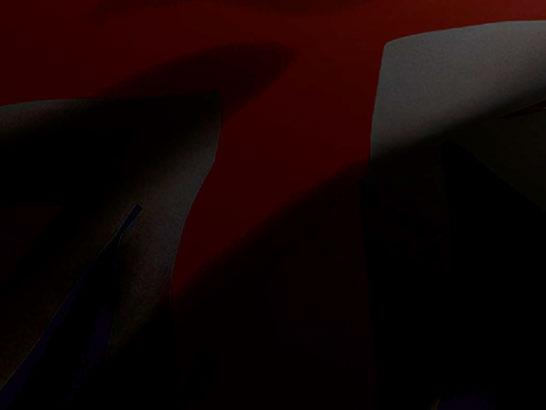














































Martin Palmer, Product and Marketing Leader at Signify, extols the virtues of Vari-Lite’s latest innovation, boasting a digital light engine, 45,000 lumens of output and pixel-level control.
Photos: Signify
Could you explain the journey behind VLHive 151 Digital FX’s development?
“The VLHive platform has been in development by the Signify R&D team for eight years, and leverages a significant number of patented technologies, with the goal of creating a digital light fixture with fewer mechanical parts and more long-term customisation capabilities. We wanted the fixture to be bright, fast, and controllable, rather than just a projector with a pan/tilt motor.”
What challenges did you and the team face?
“The key challenges in developing the VLHive – apart from the technical challenges and physical hardware – was ensuring that what we created a luminaire that allows for new effects and looks but still had a control that felt like a traditional moving light. Again, we wanted the flexibility of digital illumination but wanted the ‘buskability’ that makes entertainment lighting what it is. We wanted to put new creative tools in the hands of lighting designers, so we strove to ensure that the looks and effects of VLHive can be controlled from a standard lighting console.”
How does VLHive 151 maintain reliability and durability in challenging environments?
“We always ensure we design products that can withstand the stresses and rigours of touring. This is exemplified in the IP65 housing of the hive, along with the general construction and rigorous standards Vari-Lite customers expect. Of course, the main aim of the project

was to reduce the number of mechanical moving parts, which improves the long-term reliability. We also introduced several sensors within the VLHive, offering advanced sensor reporting to identify potential issues quickly.”
Does the digital light engine differ from other solutions on the market?
“VLHive is truly the first real step forward in creating looks and effects that are created digitally, not mechanically, as well as being adaptable over time. The fixture comes with 80 shapes and 50 animations built in, for a wide range of creative possibilities out of the box. As well, you can use our HiveCreator software to upload up to 60 additional shapes and 50 more animations to the light fixture, allowing it to be customised to fit each production over the life of the luminaire. This gives designers the long-term creativity they need, while ensuring the fixture can be controlled with standard DMX without needing a media server.”
How intuitive is the control of the VLHive 151?
“We’ve been engaged with some of the world’s leading lighting programmers right from the outset of this project to tailor the way the fixture works on a console. Shapes and animations are selected using standard DMX in the same way you would select a gobo on an analogue fixture, with familiar controls for rotation, speed, etcetera, along with additional DMX channels for new capabilities such as positioning the shape within the beam or adjusting contrast and saturation. This ensures the fixture remains
a light, not a projector, feeling simultaneously familiar and new / exciting to programmers.”
How does its ability to load user-created effects open new possibilities for designers?
“VLHive opens the door to a new world of creativity, making every show look unique, rather than using the same set of gobos in the same ways for every production. Not only can users load new shapes and animations, but with a wider range of control available, designers can adjust the shapes and animations in more ways than ever before possible. This allows the designer to showcase their work and creativity every time.”
Which features are key to making this multidepartmental collaboration more seamless?
“Because users can upload their own shapes and animations, the looks from the fixture can more easily match the rest of the production. Creative teams can create custom images and looping video clips that match what they are designing for the other stage elements. That media can then be incorporated into the rest of the lighting design without needing a media server for the fixtures. That said, for future proofing, we also adding NDI integration into the fixture, which will allow even greater crossover between disciplines.”
How can users get the most benefit from SmartColor+ and FluxBoost?
“Technologies like SmartColor+ and FluxBoost ensure that the light provides the best quality


and performance a design can expect in a variety of applications. SmartColor+ was created to ensure VLHive works in more situations, as it allows designers to adjust the balance of CRI and output to get the perfect look for the application, whether they are illuminating an artist or cutting through a bright video wall. FluxBoost also works across the board, helping maintain a constant output on mixed colours, for the maximum output possible with any colour.”
How customisable are the digital effects?
“VLHive includes three layers: a ‘wash’ layer that is full-pixel colour, an ‘animation’ layer that offers bitmap animations with controllable playback speed, and a ‘shape’ layer that renders 2D vector images within a threedimensional virtual space. These three layers can then be combined and adjusted in a variety of ways, offering a huge array of possibilities. Users can digitally scale, reposition, and rotate shapes for multiple looks, and adjust the animation’s contrast, saturation, hue, and more. They can also use HiveCreator to upload .jpg, .png, and .mp4 files to become new shapes and images, for endless possibilities.”
How does Vari*Glass enhance the workflow of crew on-site?
“VLHive features Vari*glass technology that converts the large 12” front lens to a frosted projection surface at the press of a button. This allows designers to switch seamlessly back and forth from mid-air effects to direct-view
animations on the fixture’s face. There are no adjustments or messing with lenses to change the use case, and the fixture isn’t locked into a single mode. Direct-view fixtures on stage can project beams of light one moment, and then switch to project surfaces the next, playing back animations or spelling out words to fit the design.”
Which features help production teams reduce their carbon footprint?
“Signify is a world leader in sustainability. We’ve been a member of the prestigious DJSI World Index for seven consecutive years and named Industry Leader four times. Vari-Lite always ensures we adhere to Signify’s strict corporate policies on sustainability, particularly their commitments to waste reduction and the circular economy. From a practical perspective, the VLHive has fewer moving parts, and so it reduces the amount of waste from spare parts or replacement gobos. It also features output optimisation technologies like SmartColor+ and FluxBoost, for less energy waste.”
Where can we expect to find the Vari-Lite VL Hive 151 Digital FX in the coming months?
“Vari-Lite VLHive fixtures are currently on a field test with The Wombats [see p16], and the feedback has been stellar. We’ll also debuted VLHives at Prolight + Sound, and we have product discovery days planned for all regions. Not to mention more productions expected soon.”
www.signify.com


Matt Anderson and Andy ‘Baggy’ Robinson of Sound Devices highlight how A20-HH’s integration with other products in the Astral family of wireless gear benefits engineers and details the advantages of this system-wide approach...
Sound Devices
What challenges did you face bringing A20-HH to the market?
“Handheld microphones have been on the market for decades, so when it came time to design Sound Devices’ first, we knew we wanted to create something that improved on every aspect of the category while also adding some new features that had not been attempted before. Development was informed by relationships with end users. The ability to easily swap the threads out of the microphone to utilise any capsule design was major. Furthermore, the ability to customise the shell of the microphone was also crucial. When it came to features we wanted to implement, it was a mix of the classic Sound Devices trifecta of compactness, durability, and ease-of-use that drove our concepts. These included the unique ‘Rocket Antenna’ design we utilised, miniaturising the internal components to make the external shell replaceable, and how we developed the UI.”
How did you overcome these challenges?
“Overcoming these challenges was a mix of building off the existing innovation that Sound Devices has already done in our compact wireless technology – specifically the A20-Mini and A20-TX transmitters – and thinking outside the box on how to engineer other features we deemed important into A20-HH. It was a lot of hard work and trial and error.”

What considerations were made in developing the A20-HH’s customisability?
“Audiotonix CEO, James Gordon first introduced Baggy and me three years ago, well before he was our VP of Sales and was still working as a live sound mixer. We got to talking, and at that time, A20-HH was very much in the conceptual stage. I shared some of our concepts for that with him to get his feedback. Baggy very passionately suggested the idea of the customisable shell casings for A20-HH. The more we talked about it, the more I realised it was a brilliant idea that could add even more value for the end users, and it grew into a primary design concept that drove our process. Three years later, it is one of our key features, and ‘Baggy’ is an important member of the Sound Devices team. This story illustrates how key that concept of the customer feedback cycle is to what we do. Those conversations have a real impact on what design considerations we investigate and drive us to explore new features and solutions that can end up being gamechangers.”
What kind of testing and quality assurance processes did you employ?
“Sound Devices has an extensive QA process that takes place both during the design phase and in our production phase. It’s a bit of a secret sauce for us in terms of what is done, but it’s very intense and methodical and is applied
across our entire product line. In terms of A20HH, the ‘worldwide’ use case is something we take incredibly seriously, so it was exposed to temperature and humidity extremes befitting that. We also dropped it and threw it hundreds upon hundreds of times from different heights and kept iterating and strengthening the design until we were satisfied it could survive it all.”
What feedback have you received from the wider touring sector?
“We had a dual launch at NAMM and ISE and the feedback was incredible. People were excited about the microphone and eager to get it into the field. Nearly every single idea for A20-HH came from or was influenced by the needs of our customers. They sought these features out. We’ve also found many features we developed that perhaps weren’t requested by some, have been welcomed by them when they get a chance to use it.”
How does the A20-HH’s integration with other products in the Sound Devices Astral family?
“A20-HH was the missing piece in the Astral family and we were set on making sure we got it right. Using them all together gives a continuity of workflow, sound quality, and usability that makes for a seamless RF experience. It’s easy to set up and get going, and once it is set up, it’s rock solid.” www.sounddevices.com




























Following the introduction of the new portable wing at Prolight + Sound, Obsidian’s Koy Neminathan previews NXW.
Photo: Obsidian
What influenced the creation and feature set of the NXW?
“Our users requested a portable wing featuring motorised faders and full frontpanel backlighting. These features make programming easier, allowing for playbacks to be colour-coded for quick recognition.
The ability to upgrade the universe count of the wing after purchase, was also high on the request list, to ensure our customer’s investment is future proofed. We now offer options to upgrade NXW up to 128 universes when needed. Being a wing, it relies on the user’s laptop. Nowadays, many laptops do not feature a network port, and an increasing number of lighting systems connect with a single EtherCON cable. As a result, NXW features an integrated locking RJ45 port, to add a network adapter to the users laptop.”
How does the NXW benefit the users of Obsidian Control Systems’ ONYX platform?
“The NXW allows freelancers and touring professionals to programme at home or on tour, and then seamlessly transfer their show file over to ONYX consoles. NXW can also be added to another ONYX console on the network, as a primary or secondary system. The flexibility and scalability are major pluses.

The NXW form-factor magnetically integrates seamlessly with our existing NX1 and NXP, allowing users with existing equipment to expand their setup with new hardware.”
How long did it take to transform the NXW from concept to creation?
“It was incredible how this came to fruition after initial discussions. Once the design was finalised, we had a prototype in our hands in under a year. We spent a significant amount of time on the quality of the keys and key backlighting, researching and testing many different switches and caps.”
How does the compact nature of the NXW make it ideal for live touring?
“We understand the needs and requirements of today’s user. Having a tool that was not just portable for touring, but rugged, was very important. Great care was taken to ensure that although compact, NXW is still thoughtfully laid out, to make it a joy to use for extended periods of time.”
How will the smaller form factor of the NXW benefit operators on the road?
“We all know the fears of touring with consoles, especially when they get flown with the rest
of the equipment, as there is always that risk that something goes missing. Being the size and weight it is, the NXW is perfect as carry-on luggage so either it’s in front of you under the seat or in the overhead compartment.”
Is there a growing demand for more budgetfriendly options for users in the sector?
“We understand that return on investment is high on every freelancer’s mind, but so is reliability, especially of kit they own. The requirements are clear, and cost-effective products stand out when personal investments are made. Being budget friendly doesn’t mean less though; on the contrary, more is expected from the product and happily, the NXW ticks all the boxes.”
Where can we expect to see the NXW in the coming months?
“You can expect to see a few NXWs in the ‘wild’ soon being tested by users around the world. And, with our new promise, customers should be able to have them in their hands three months post-launch. There is nothing worse than getting excited about a product and then having to wait over a year for it – we expect to deliver the NXW by August 2025.”
www.obsidiancontrol.com
Dedicated to improving the industry’s practices, PSA delves into the importance of freelancers and ways in which they should protect themselves.
Words: Liz Madden and Tom Rees
Photo: PSA
Fulfilling our representation mandate and being the voice of 2,500 event production members, the PSA have recently participated in several discussion sessions at industry events with similar themes related to collaboration, the event ecosystem and vital role freelancers play.
In May, we will participate in a Power of Events panel session at PLASA North discussing the topic The Power of CrossSector Collaboration (no spoilers here, promise). Back in February we were at Confex/ Event Production Show considering the events ecosystem with a panel of agency and supplier representatives, between these and other discussions, we reflect and reinforce the recurring theme that freelancers and small businesses are a significant resource to be valued, because they help hold the UK live performance and corporate communication events industries together.
Whether its agencies representing brands, promoters staging tours, shows and festivals, trade show organisers or corporate communications businesses; they all have one thing in common. Their dependency on flexible,

high quality and reliable resources. Tour management, production houses, technical suppliers and personnel providers all rely on dedicated and skilled independent workers to support them.
Technical teams, production management, logistics, operations, safety, support crews, infrastructure and site overlay… all include significant independent personnel resources.
Collaboration with and reliance on these assets are increasing in importance by clients of all types. It’s in their interests to achieve their objectives effectively, efficiently and safely. It is in everyone’s interests to treat these resources as part of a collaborative team. Encouraging inclusion and involvement in planning and development stages as much as in delivery.
So, that’s a good thing, right? Maybe… A lot of freelance work still relies on a level of trust and mutual respect rather than a formal contract of services between supplier and client. Thankfully, we hear of few breaches of this relationship.
We always recommend our members gets a written agreement from a client. Ask yourselves why not, if not. Especially if there isn’t any

history of a good working relationship. On our panels, pay and working conditions are both frequent, major talking points.
At ILMC, the past research by the PSA on working hours and its dangers is still a matter of discussion. Who really wants a rigger working over 16 hour shifts as a hypothetical example. Does, and should, our industry still expect long hours of attendance without quality rest and breaks allowances.
The PSA is dedicated to evolving and improving our industry good practice. As we head into a busy spring and summer season, let’s all take responsibility to look after ourselves, each other and the clients we work for. As well as calling out poor practice and unreasonable expectations to help improvement of standards.
If a client is pushing for more effort, for longer and it’s compromising anyone’s health and welfare: do them a favour and yourselvespush back. It’s not always about the money. It’s also about being able to work the next booking, doing it well and maintaining that all important mutual respect.
www.psa.org.uk
Five generations, one tour bus. As the live entertainment and touring world evolves and diversifies – empathy, experience, and connection take centre stage.

What was your first album? Or maybe it was a CD? A download? What was your first concert? Your first real gig? Did you grow up in an entertainment family? Do you remember connecting to the internet for the first time? Or maybe, you’ve always had access to it, born into a world that was already changed.
Pop influence, family values, and technologies all help shape how we grow and have a major impact on who we become. As we share impactful cultural experiences, shifts in human behaviour can be felt worldwide, and generations begin to emerge.
No one knows this better than our event crews. We are constantly welcoming new people to our teams and redefining our crews with each new gig. We are asked to learn, not only to work alongside each other, but also to live with each other on tour.
Innovating gear and technologies are always changing for the next big moment. It would be easy to assume new faces are too old, or too young, but ultimately, the show must go on. For the first time, we are experiencing five different generations in the workforce. Even though our offices are a little less traditional in live entertainment, the impact is still real. How do values change with age groups? Work ethic? Travel style? If we are aiming to support our teams better, we need to better understand the individuals who exist within them.
In year three, THE Conference: Live at Lititz introduced a handful of empathy and listeningbased programming, aimed at strengthening these relationships, and better understanding the needs of different generations. Gathering

in small groups, near strangers were asked to pause, listen, and share about their own life experiences. A little intimidating, sure, but these skills take practice. Dozens showed up over the three days, allowing themselves a little vulnerability. By better understanding the range of unique perspectives in the room, our own perspectives began to shift.
Building on this momentum, Rock Lititz recently hosted a Cross-Generational Summit. Welcoming Baby Boomers, Generation X, Millennials and Gen Z’ers, a few dozen live entertainment professionals sat to talk about the similarities and differences in how we see the world. Older generations were taught rules and order for a world that no longer exists. That can be frustrating, confusing and even scary.
Younger generations have been raised with much less certainty, with 24-hour news cycles, environmental issues, and regular advances in communication. That can be frustrating, confusing, and even scary. Regardless of age, we all struggle with feeling seen and valued. We all feel a little scared about what comes next.
We are also all looking for a stronger connection to our communities. We all want ways to learn new things and add value by sharing our experiences. By investing in these interpersonal connections on our team, and taking a moment to listen, we can accomplish both. What does your personal experience offer your team? What have you appreciated about working with both older and younger generations? Take a moment today and talk to someone new.
www.rocklititz.com



Martin Brock, Senior Manager, Global Regulatory Policy at Shure underlines the significance of Wireless Microphone Spectrum Alliance (WMSA).

TPi readers are more aware than most of radio spectrum’s importance. It is critical to wireless audio content production and has a fair claim to be considered as the raw material on which many events depend. Yet within the arcane world of spectrum regulation, discussions are taking place that could have profound long-term consequences for the future of wireless audio production.
The past 15 years have seen successive losses of radio spectrum for wireless microphones and in-ear monitors, principally in spectrum shared with digital terrestrial television. In most cases, the spectrum has been re-purposed and auctioned to mobile phone networks.
Now, regulators in the UK and Europe are discussing the future of TV distribution itself, throwing into doubt the future of a decadeslong spectrum sharing arrangement between Broadcasting and Programme Making and Special Events (PMSE) in the vital 470 to 694 MHz band, in which has evolved a mature global equipment ecosystem.
Last year, Ofcom published its Future of TV Distribution early market report to government, which outlined three potential approaches
to the 470 to 694 MHz band. In the European Union, the Radio Spectrum Policy Group (RSPG), a high-level spectrum policy advisory group to the European Commission, has already published a draft opinion on the future of the band, and ran a related workshop.
Following each previous spectrum clearance, the wireless audio industry managed to adapt, but we have now reached a critical point where any further loss of spectrum for wireless mics could make many events unviable. There is a limit to what can be achieved through technical innovation or further changes to working practices within the industry to mitigate a further reduction, particularly where events are becoming bigger and more sophisticated in response to consumer and audience demands.
The cultural and creative industries continue to show growth which outpaces many other sectors, even more remarkable considering it was hit disproportionately hard by the COVID-19 pandemic.
The UK government has justifiably identified the creative industries as one of eight growthdriving sectors in its modern industrial strategy. However, considering that wireless audio’s
use of spectrum sits at the start of the value chain, it is perplexing to see this growth threatened by spectrum regulation that often pulls in the opposite direction and perpetuates uncertainty. What is called for is spectrum policy which recognises PMSE’s intrinsic value as a stand-alone application, irrespective of the platforms via which its output is distributed, and which properly considers the socioeconomic benefits derived f rom worldclass content creation.
The continuing pressure on TV-UHF spectrum for wireless mics was the spur for Shure’s recent formation of the Wireless Microphone Spectrum Alliance (WMSA), a coalition dedicated to ensuring access to RF spectrum for wireless microphones. This alliance includes a diverse range of stakeholders, such as professional end users, content creators, live production service providers, equipment manufacturers and many others, all of whom share a common interest in preserving access to this vital resource.
Please add your voices in calling on policymakers to protect the future of wireless audio content creation. www.shure.com


Fill the largest arenas with dual-layer effects. See the newest addition to our wildly successful, tour-dominating STRIKE family. BOOK A DEMO

Robert Scovill, a multi-award-winning mix engineer and Senior Live Sound Market Manager at EAW, shares how ADAPTive technology continues to push boundaries...

Words: Stew Hume
Photos: EAW
Launched in 1997 with the KF900, ADAPTive technology remains a benchmark in live sound. More recent releases like the AC6 build on EAW’s legacy of products such as Anya, Anna and Otto — each introduced as the touring industry was embracing line array systems. Almost three decades on, how has ADAPTive stood the test of time?
Well, to begin with, ADAPTive continues to be the only line source PA system with a high enough driver density to create a multidriver, single acoustic source out to 13KHz. This is true for a single cabinet, or any length ADAPTive array. “ADAPTive was also the first PA system to integrate Dante networking that included full redundancy, not only for the audio transport but for active control by EAW Resolution software,” Robert Scovill – a multiaward-winning mix engineer and Senior Live Sound Market Manager at EAW – explained.
“By adhering to the strict spacing demands set down by the original line source criteria for high frequency elements, the ADAPTive concept and design continues to be not only relevant but in demand. As a touring mix engineer, I was fortunate to use it early on, notably with Tom Petty and The Heartbreakers. Joining EAW years later, I was pleased to find ADAPTive not only surviving but thriving — and I believe it’ll remain central to our line-up well into the future.” Where traditional beam steering can feel like forcing audio into unnatural patterns — often relying on excessive DSP for even small shifts in vocal range — ADAPTive uses thoughtful driver spacing and density. This applies not only to individual enclosures but across vertical arrays, allowing for a clean “collapse” of vertical energy, which can then be reshaped into almost any polar pattern. “Compared to beam steering, it’s elegantly
simple and highly effective. Pair that with Resolution software, and you gain precise control of start/stop coverage and SPL optimisation for virtually any venue geometry,” Scovill remarked.
One of the less heralded aspects of ADAPTive is its ability to deliver audio as a point source over a much broader frequency range than all mechanically articulated systems.
Thanks to its high-frequency element spacing and density, the system delivers a coherent response that excites the room more cleanly than systems with disjointed or diffused dispersion. Quite simply, the room sounds better when it’s being excited by a single, coherent source. “Having mixed across four decades in countless venues, I can say with confidence that line arrays have transformed our results. Though modern systems all boast improved drivers, it’s the control over



dispersion — where the sound goes after it leaves the box — that’s made the biggest difference. EAW has always prioritised pattern control, and no product line delivers it quite like ADAPTive,” he shared.
What’s also fascinating is how broadly applicable the technology is as Scovill points out. “ADAPTive has been deployed with stellar results in shows that demand top-tier intelligibility and musicality — take Hamilton for example, which fully leverages its ability to adapt to wildly different performance spaces.”
It ’s also at home in high-profile acoustic spaces like Mechanics Hall and Geffen Hall, where the system’s performance is scrutinised through the lens of pure sound quality. Outdoor venues like Pier 17 in New York and Great Park Live in California benefit from its precise pattern control, particularly where noise abatement is a key concern.
Scovill believes ADAPTive’s “nimbleness” is core to its value. He elaborated: “With systems like Anya and Anna, expanding horizontal coverage is as simple as attaching more columns — no need for spaced arrays. This saves riggers valuable time, as there’s no need to span wide ceiling trusses just to meet horizontal coverage goals.”
Additionally, the system’s coverage can be adjusted at the push of a button via Resolution, including start and stop angles — without any physical changes to the array. Even in the event of a component failure, Resolution can re-optimise coverage on the fly, with patented auto-healing functionality. These features are invaluable when working under the time pressure of daily load-ins on tour. “Our industry has made huge strides in recent years with
subwoofer management,” Scovill said. “DSP tools and creative deployment have helped, but when Otto entered the market, it took things even further.”
Ot to houses two independently processed and amplified 18-inch woofers in one box, offering cardioid, hyper-cardioid or omni patterns without requiring multiple enclosures.
“Add multiple Otto’s aware of each other’s placement via built-in IR sensors, and Resolution software can turn them into a directional, high-precision low-frequency system,” Scovill explained. “This is particularly critical in challenging environments, from steep amphitheatres like Red Rocks to noisesensitive urban festivals. Traditional subs — especially when simply stacked — often struggle in these scenarios. Otto’s flexibility delivers where others fall short.”
Of course, the future is never guaranteed. “ADAPTive has weathered the ups and downs of the touring market — and even EAW’s near-demise as a company. Yet here we are. The technology continues to be specified, sold, supported, and crucially, developed. What keeps it alive is belief — in the product, the team behind it, and the long-term vision. It helps, of course, to have backing from a parent company like the RCF Group, who understand and support innovation in live sound,” he said.
ADAPTive might not be for everyone yet. However, for those living through the realities of daily show builds, unpredictable venues, and tight schedules, it is the combination of control, flexibility and sonic quality of ADAPTive that offers a serious advantage. www.eaw.com www.robertscovill.com
Unusual Rigging launches a sustainability review project with Hope Solutions.
Photo: Unusual Rigging
Unusual Rigging is undertaking a pioneering sustainability initiative that aims to embed environmental and social sustainability across its operations and supply chain. With ambitions that extend beyond internal improvements, the project is designed to identify key areas for action aligned with recognised industry frameworks.
To deliver this work, Unusual Rigging is working with Hope Solutions, a sustainability consultancy operating at the intersection of climate science and live events.
Known for their work with clients including Coldplay, Netflix and Live Nation, Hope Solutions brings deep expertise in carbon measurement, stakeholder engagement, and long-term sustainability planning.
The project is being led internally by Unusual Rigging Managing Director, Tom Harper – who holds a Masters in the Circular Economy MBA — and supported by Facilities and Resource Manager, Lizzie Richmond, who oversees the company’s ISO certifications.
This collaboration marks a clear step forward in Unusual Rigging’s ongoing commitment to climate action, ethical governance and transparent industry practice. “We’re building something much bigger than a

company checklist,” commented Harper. “We are mapping out how Unusual Rigging can act as a catalyst to enact broader industry change – creating tools, processes and partnerships that will allow the company and others to align with fast-approaching sustainability regulations and expectations.”
The project focusses on stakeholder engagement, peer benchmarking, and a materiality assessment to determine where Unusual Rigging can have the greatest impact across environmental, social and governance (ESG) frameworks. It also lays the groundwork for mandatory reporting, future certifications, and a comprehensive carbon reduction plan.
Phase one includes auditing operations, engaging with customers, suppliers, and industry peers, and building a clear materiality matrix that identifies what’s most important — both to stakeholders and to Unusual Rigging’s day-to-day impact. “This is a turning point,” explained Harper. “Sustainability can’t be an add-on. It needs to be built into how we think, how we operate, and how we collaborate as an industry. We’re proud to be doing the work — and even prouder to be doing it transparently.”
www.unusual.co.uk
www.hopesolutions.services



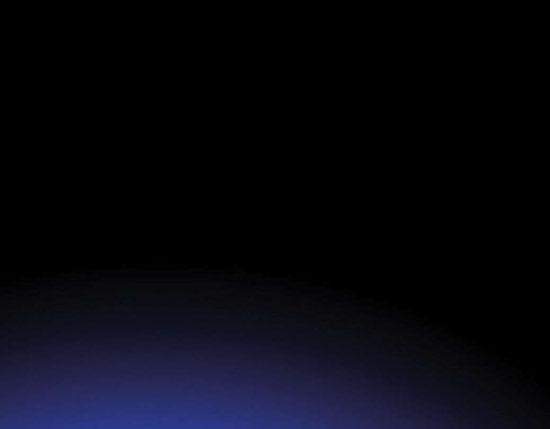
















OLA MELZIG
PRODUCTION MANAGER
M&M PRODUCTION MANAGEMENT

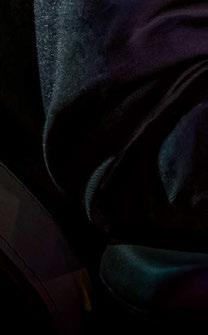
I just love the new generation of the Artist user interfaces. The SmartPanel‘s intuitive workflow and its very visual layout are simply fantastic.
I can customize it in any way I need, which is absolutely crucial for the big live events I typically work on.“
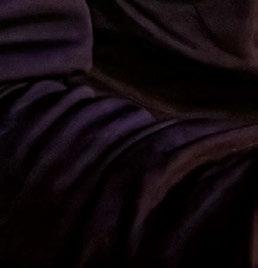
ARTIST INTERCOM
Professional and reliable live communications. Seamless integration of Riedel‘s SmartPanel and Bolero wireless intercom. Easily scaling from 16 to 1024 ports with flexible licensing.



Meet L-Acoustics’ new CEO of Americas.

Having recently celebrated its 40th anniversary and welcomed its 1,000th team member at the end of 2024, L-Acoustics entered 2025 with the announcement that Bryan Bradley has joined the company as CEO, Americas. The news was jointly shared by global L-Acoustics Co-CEOs Laurent Vaissié and Hervé Guillaume, to whom Bradley reports. In his new role, Bradley will oversee all operations across North, Central, and South America, dividing his time between the company’s global headquarters in Westlake Village, California, and a new Americas operations and creative hub set to officially open later this year at Nashville Yards.
What initially attracted you to L-Acoustics?
“I really like the loudspeaker business and the professional audio industry as a whole. I think it’s the ‘final piece’ of the live production puzzle that everybody experiences. I’ve worked in every part of the supply chain –from microphones, processing and consoles, through to loudspeakers and electronics in the past, and in my opinion, being at the point where performance and experience collide is the best part of the industry.”
What excites you about this role?
“The culture. L-Acoustics, more than any other company I’ve worked for, really values long-term development in technology. They fight every day to dramatically improve the experience that people have, and the investments they make are examples of that,
“Five years from now, I would like to see the majority of the top tours in the Americas using L-Acoustics products and solidify our position as the industry leader in sound reinforcement technology as the choice for the premium experience for performing artists, their support teams and their fans.”
Bryan Bradley, Americas CEO at L-Acoustics
so the chance to join the team that’s laser focussed on that type of improvement, was an opportunity of a lifetime.”
How do you plan to build on the company’s 40-year legacy?
“The beauty of this role is it is not a turnaround situation, but rather about being strong enough to hold on to the rocket ship success the company is currently experiencing. I intend to tap into my experiences at large organisations to help L-Acoustics reach its growth goals.”
Where do you see the future of sound reinforcement?
“We’re competing for wallet share with theme parks, immersive movies and other discretionary entertainment. For artists to be
successful they need to have sound clarity and control that gives them every shade of colour on the pallet to paint the picture they’re sharing with the audience. Five years from now, I would like to see the majority of the top tours in the Americas using L-Acoustics products and solidify our position as the industry leader in sound reinforcement technology as the choice for the premium experience for performing artists, their support teams and their fans.”
Away from the office, how do you like to spend your free time?
“I love attending live shows, especially the ones that catch you completely off guard. Aside from that, I also like to surf, golf and ski in my spare time – being outside and active is where I prefer to be.”



